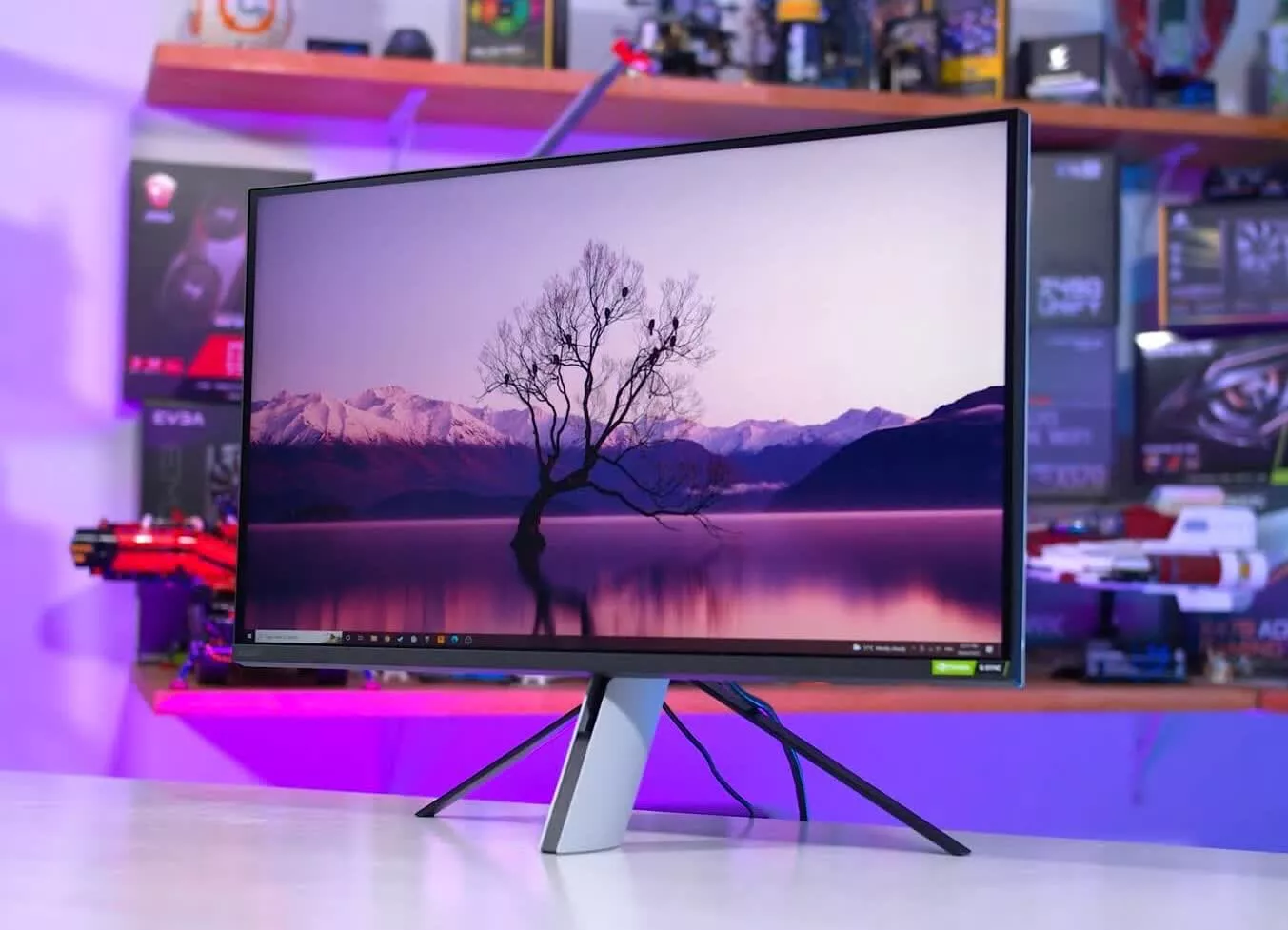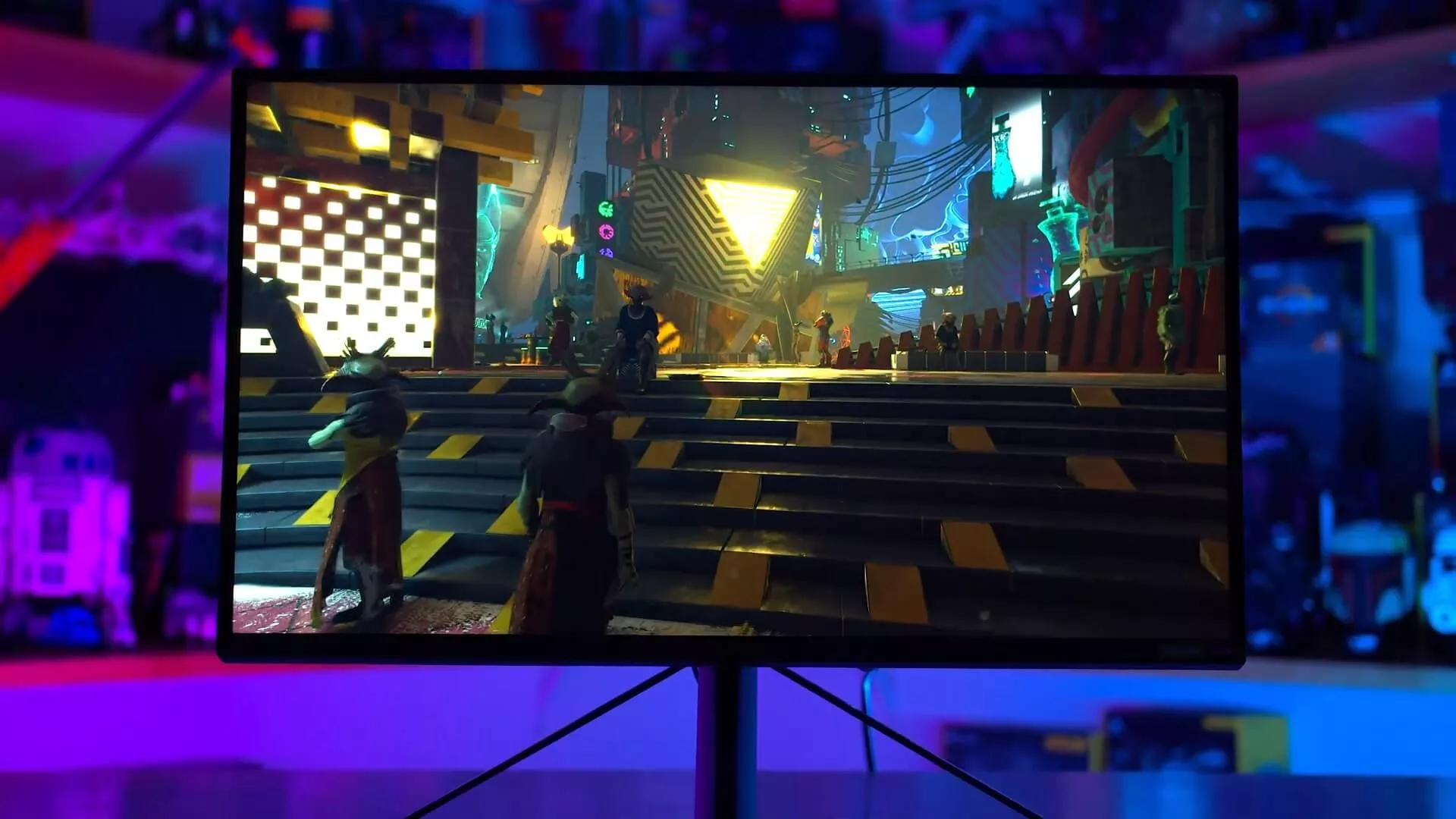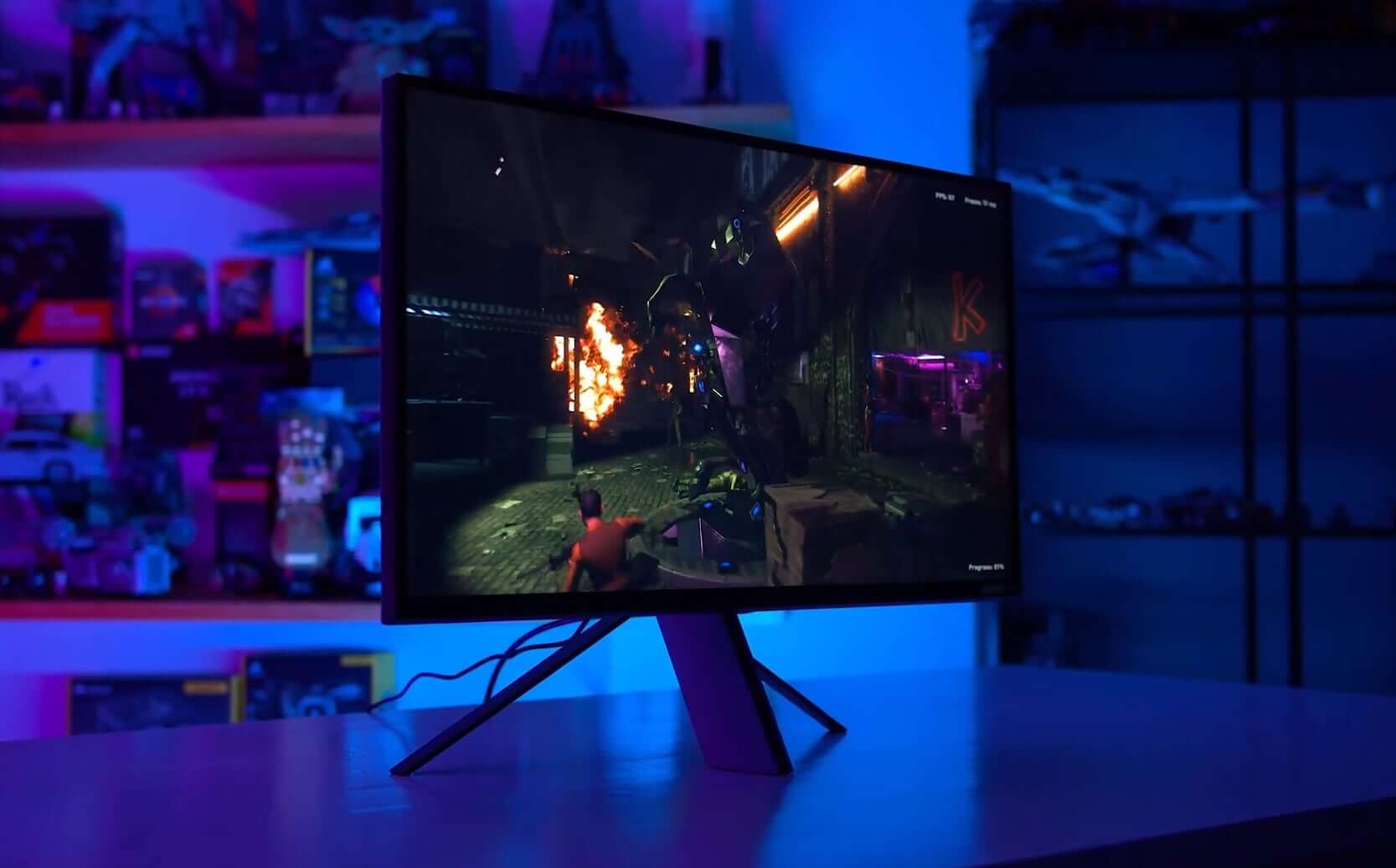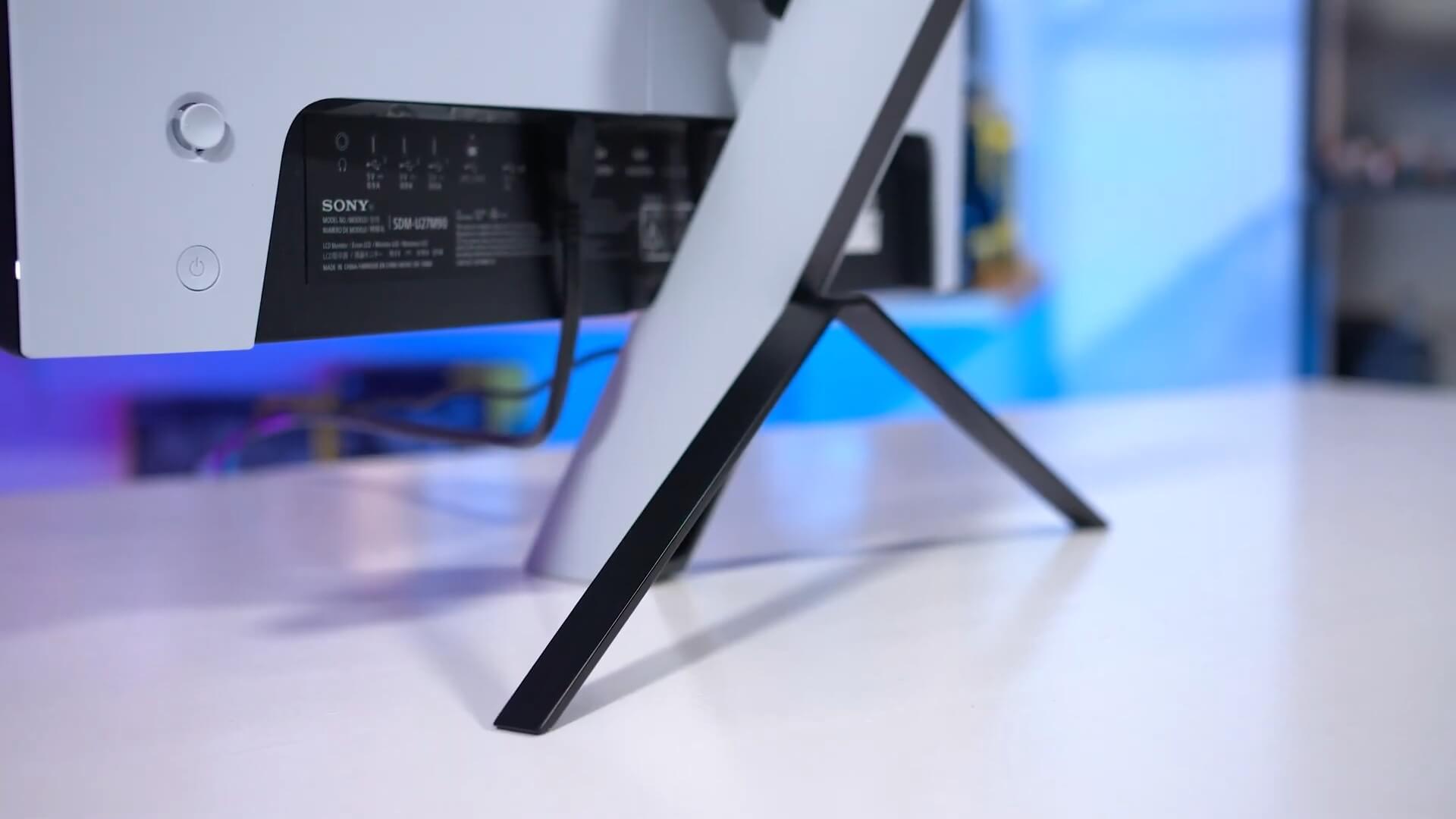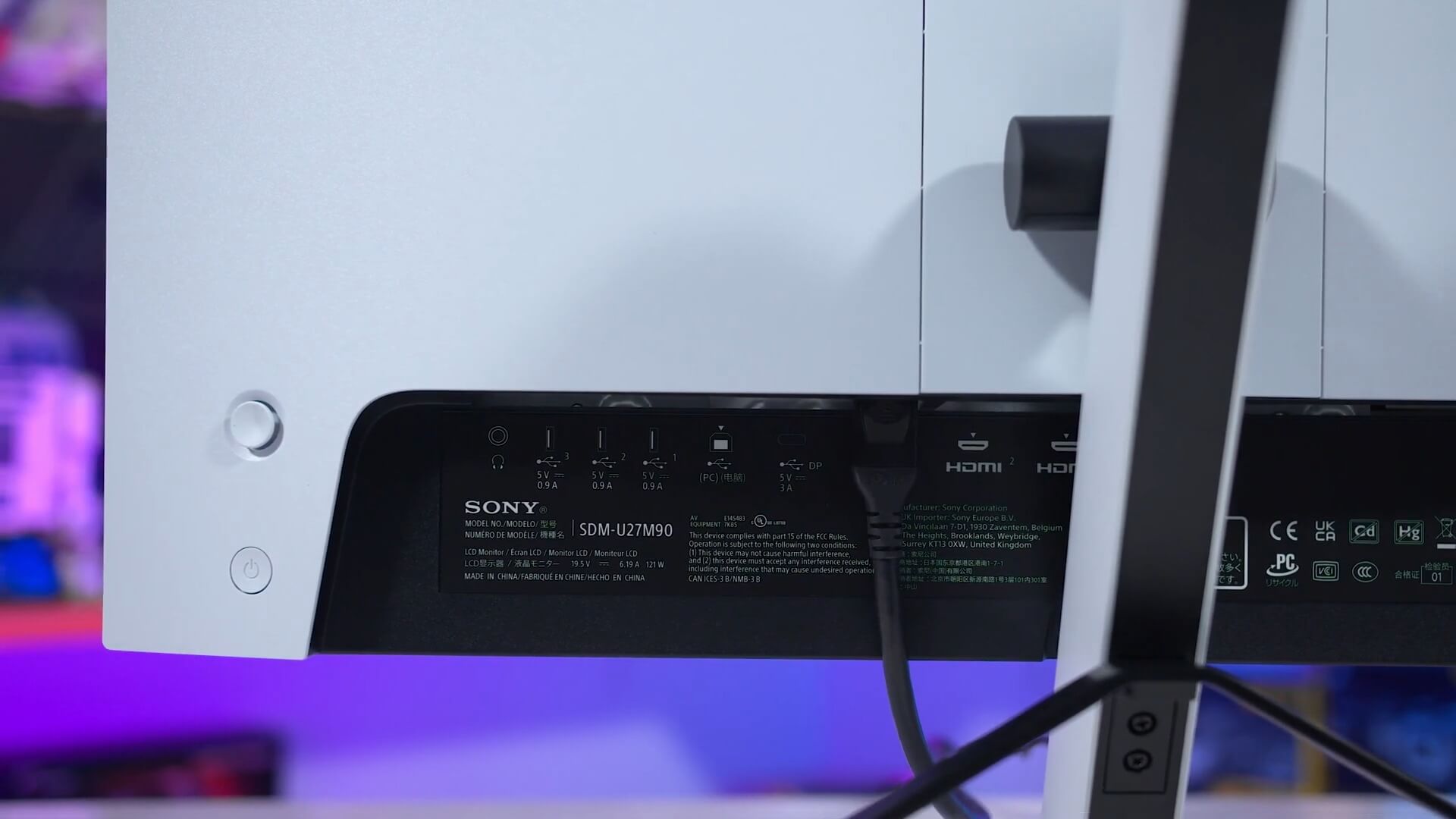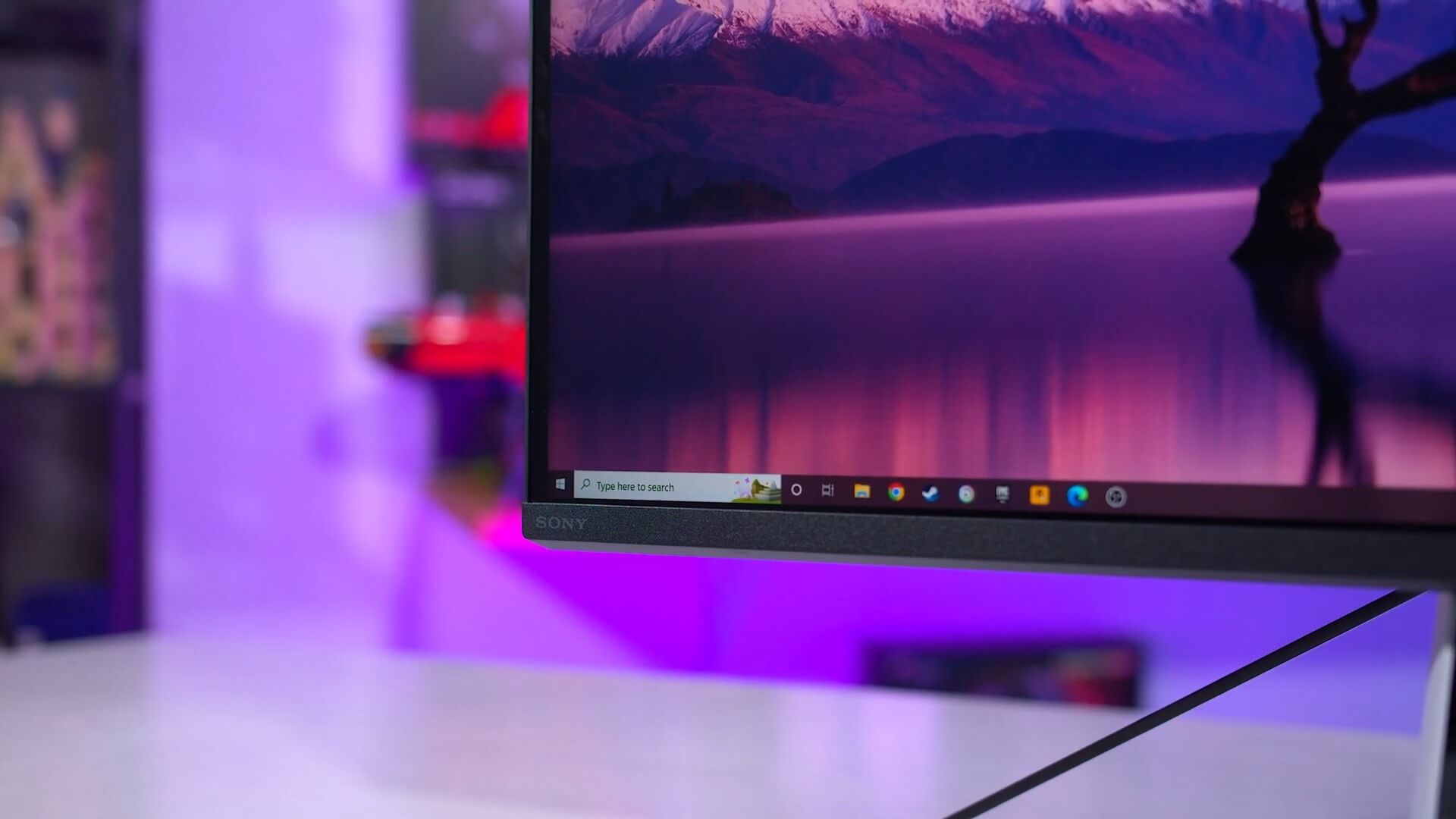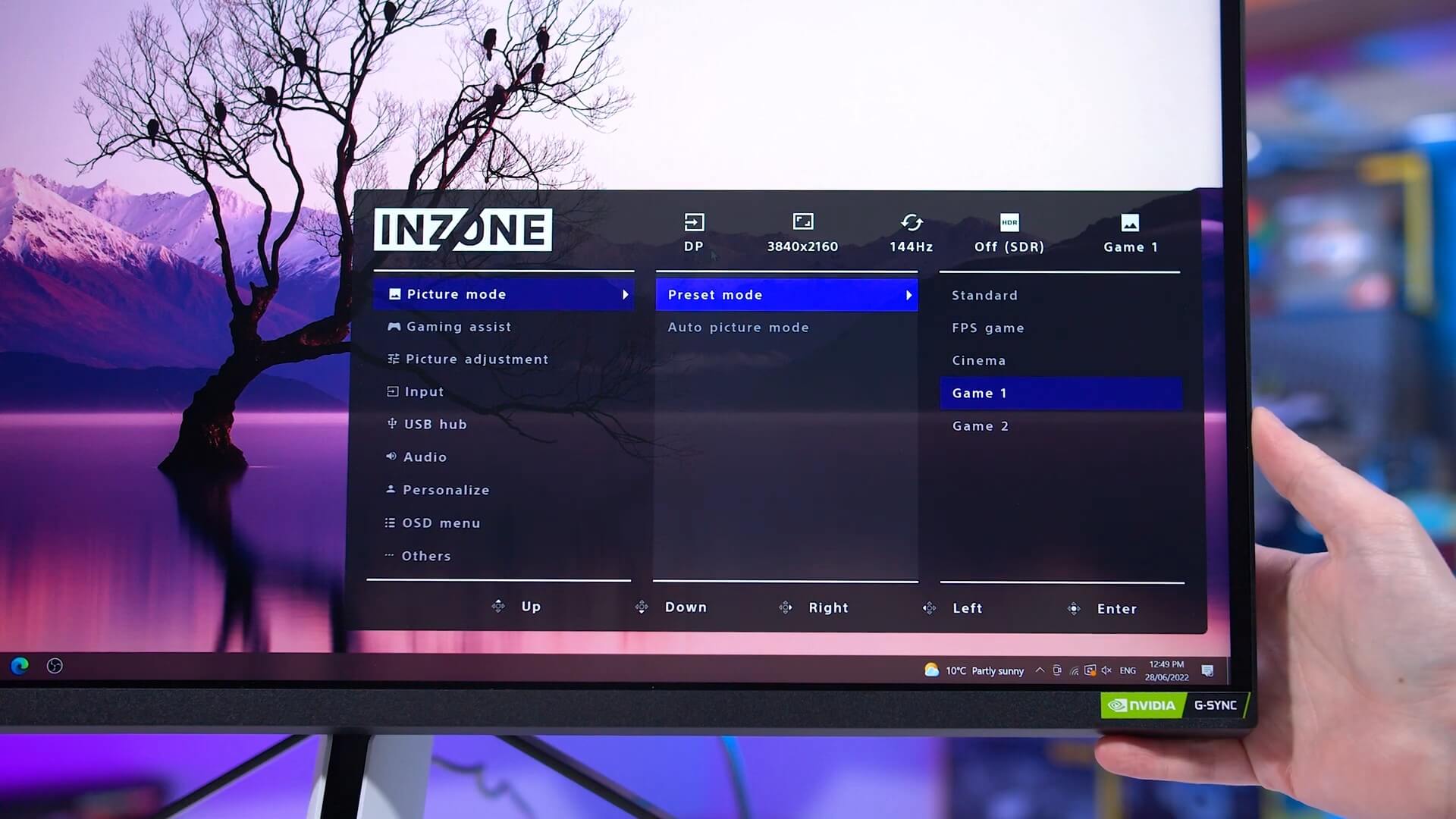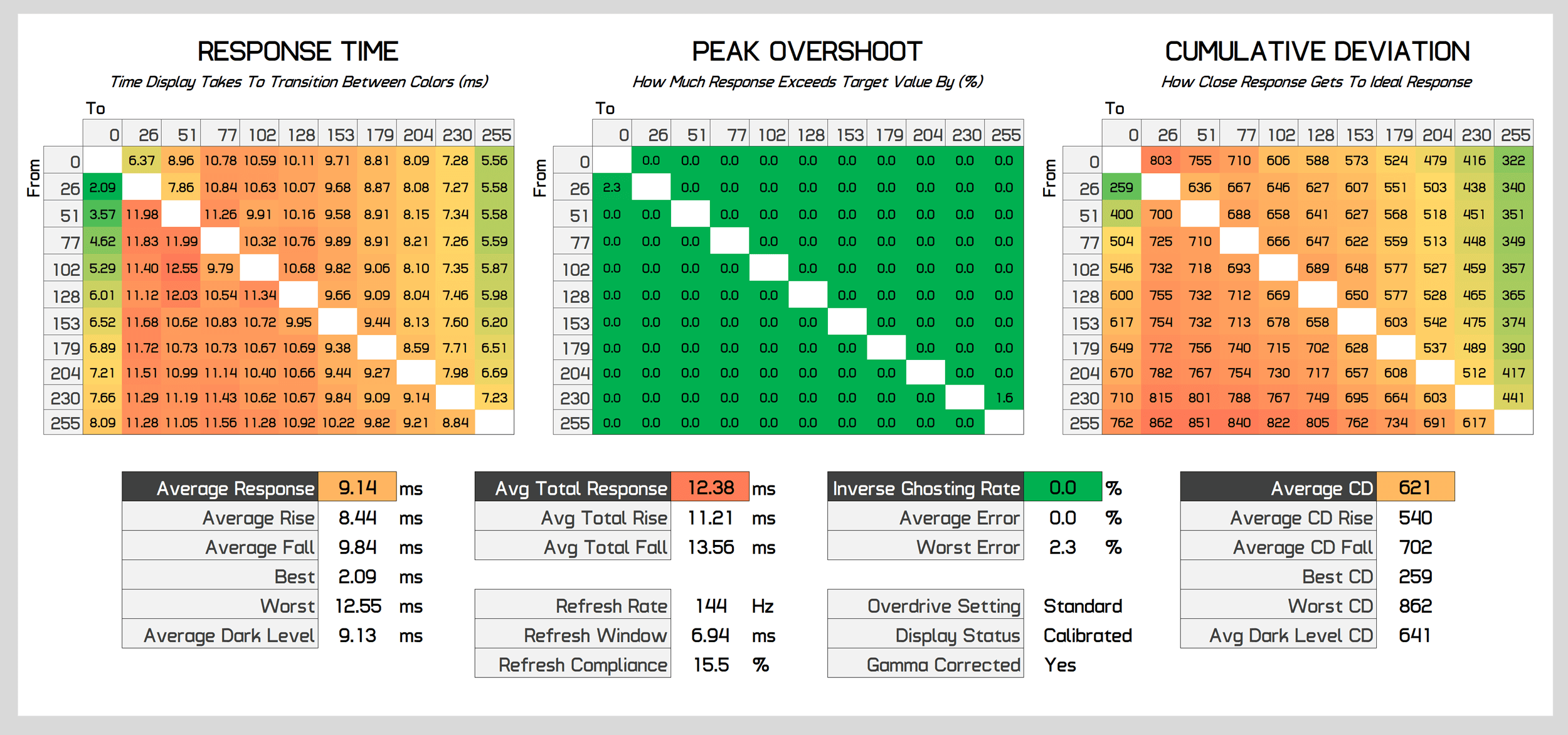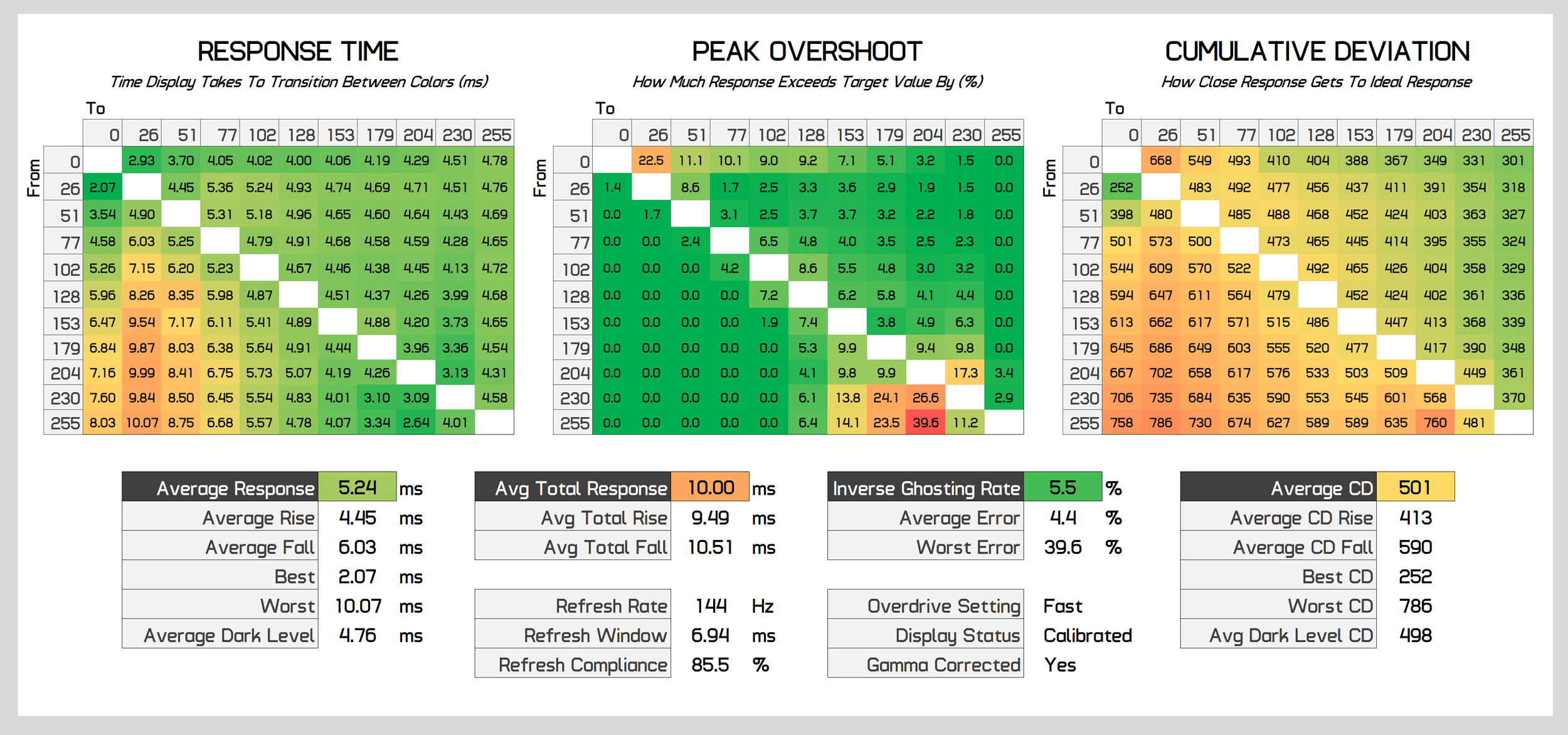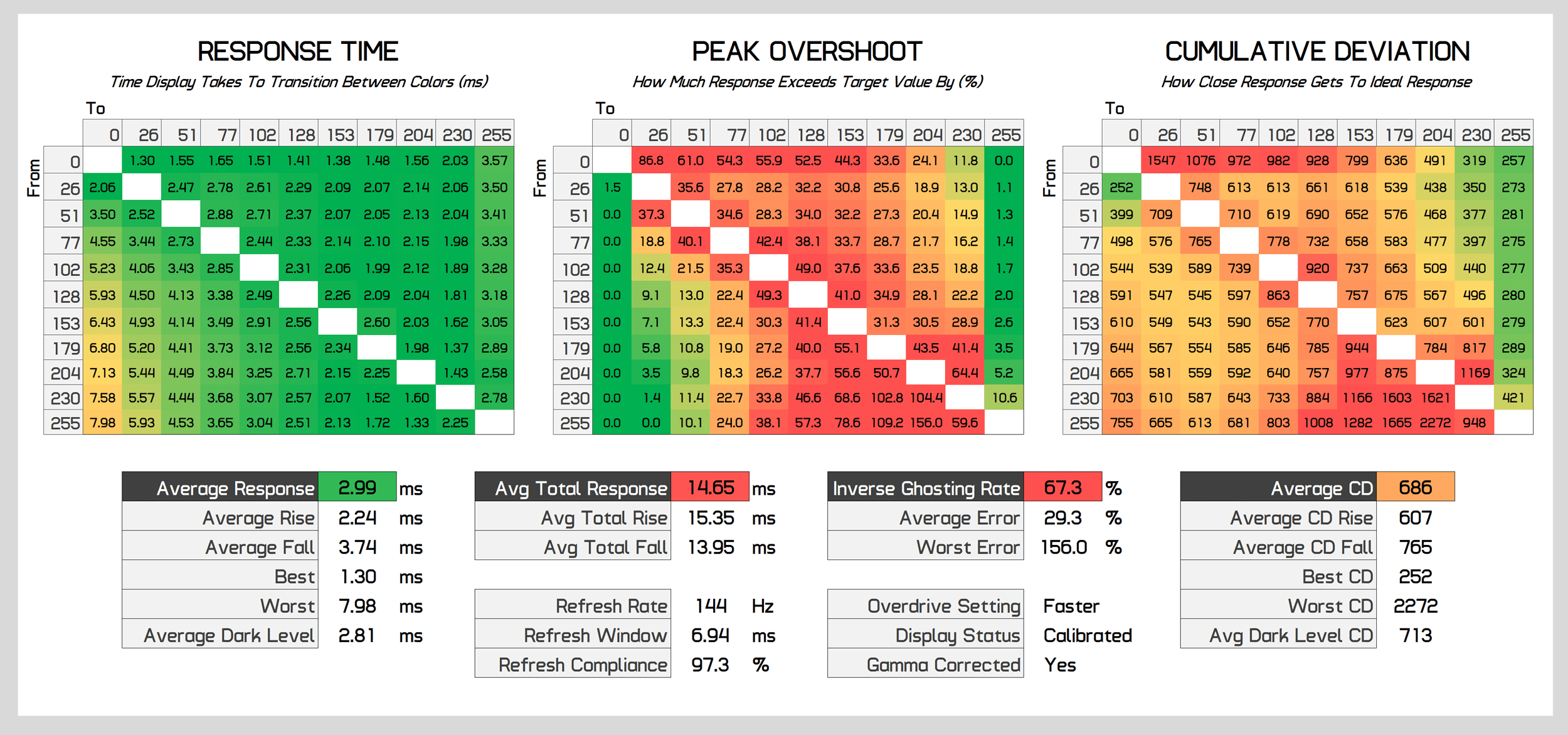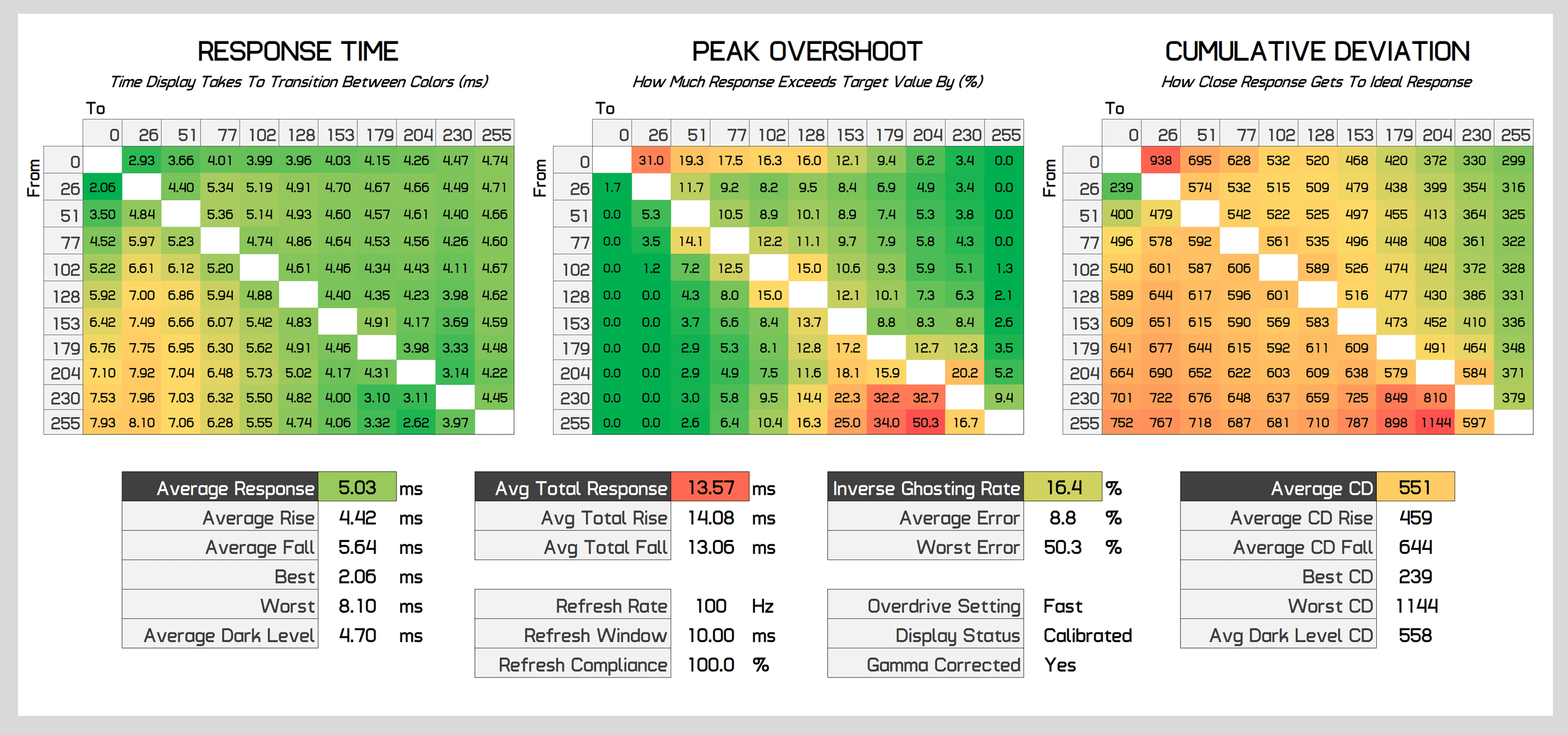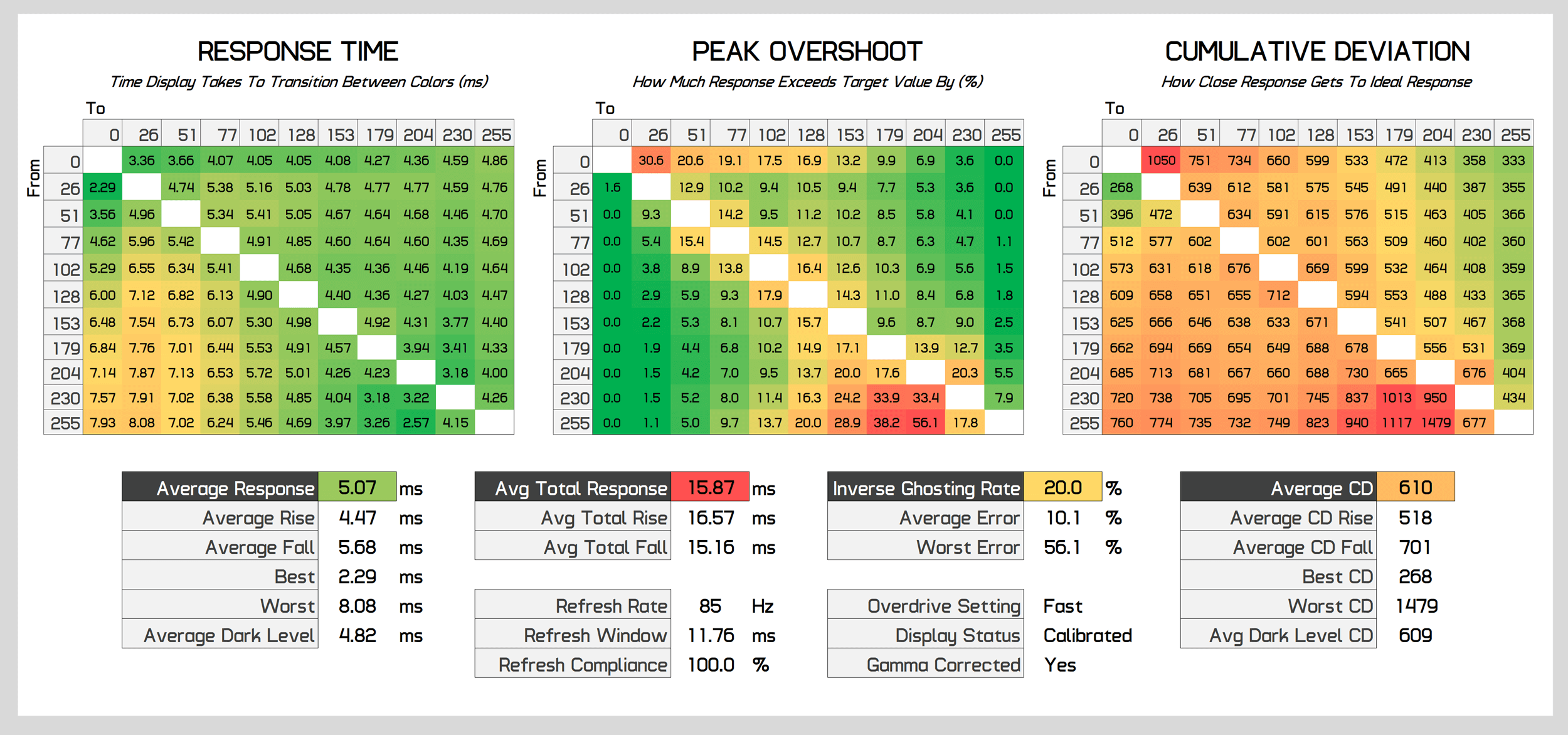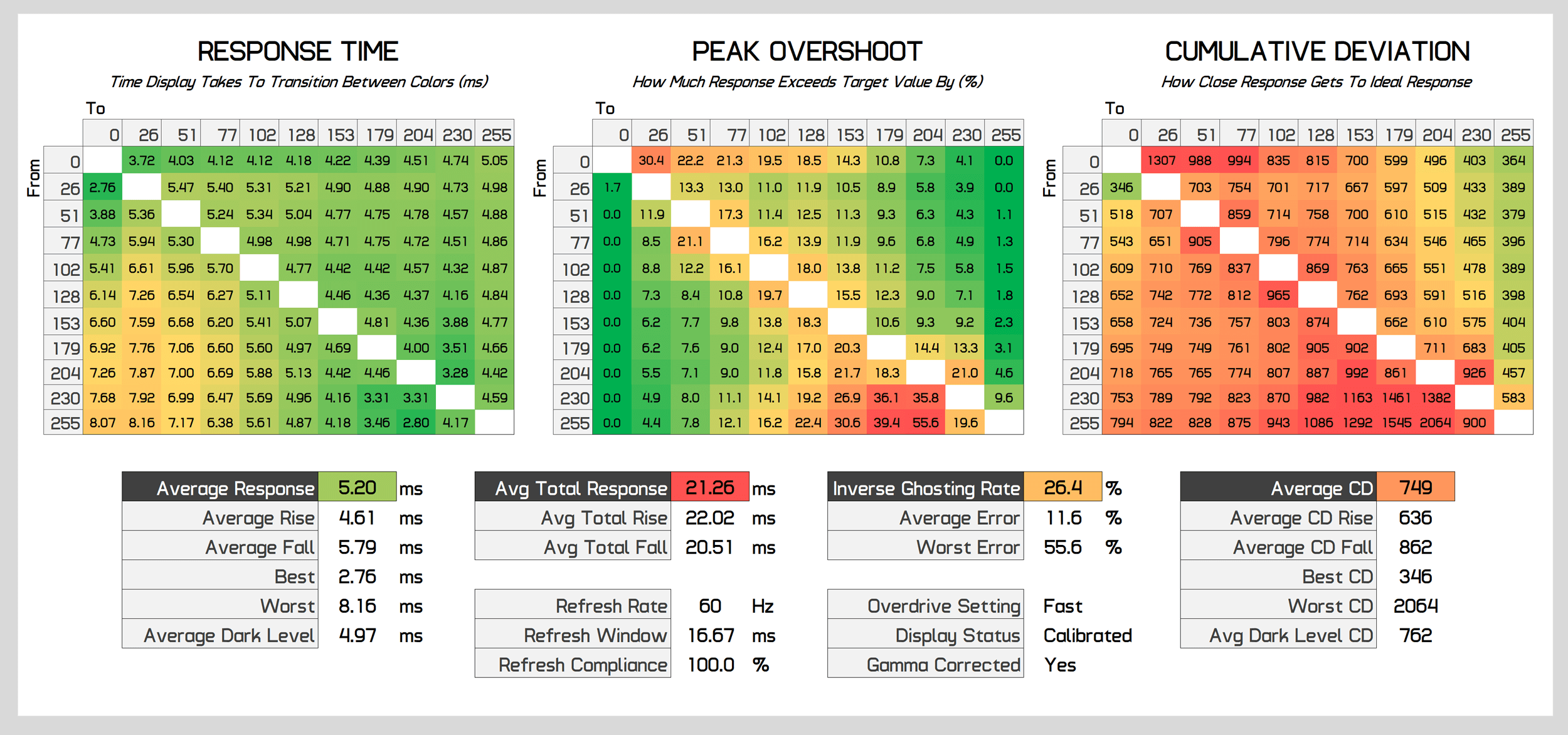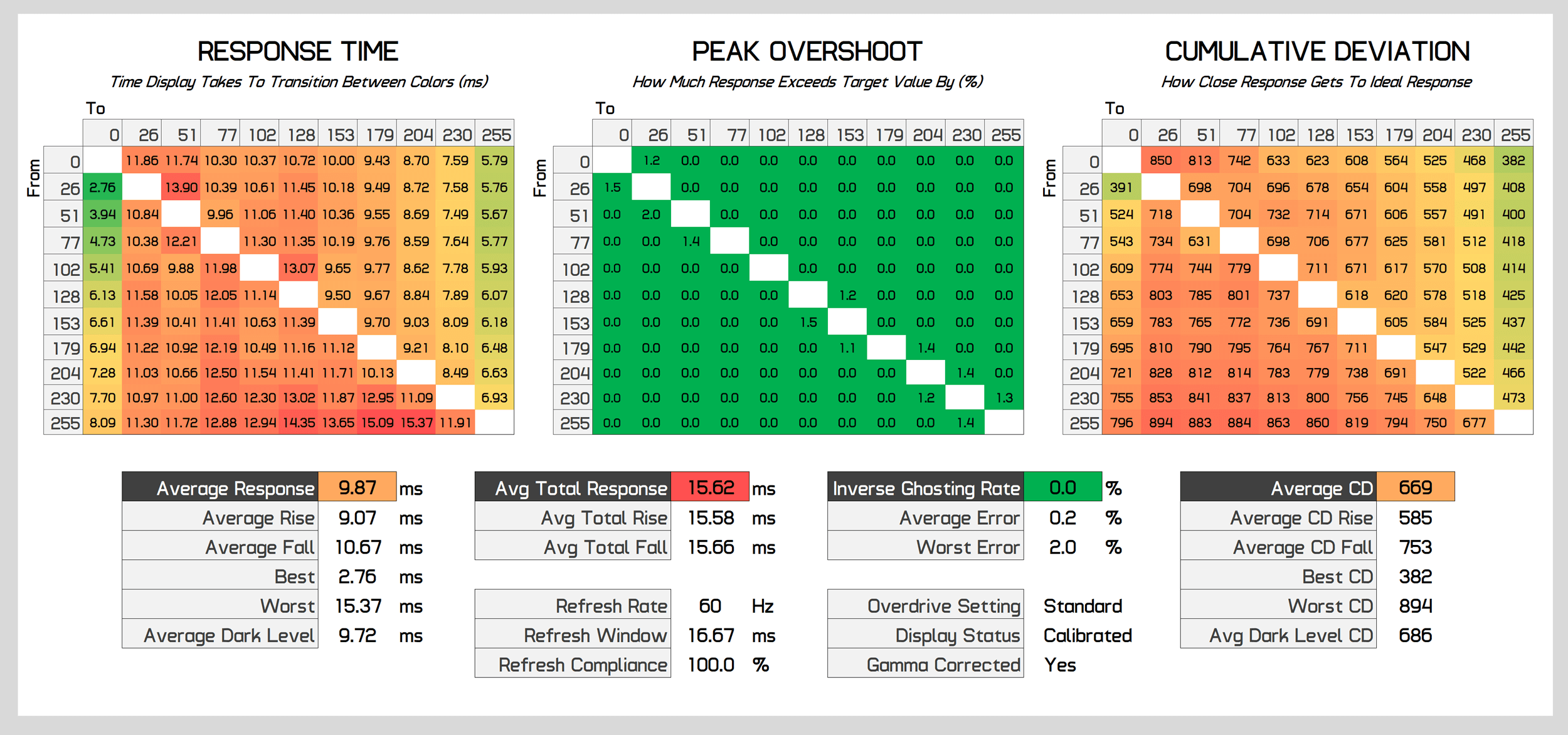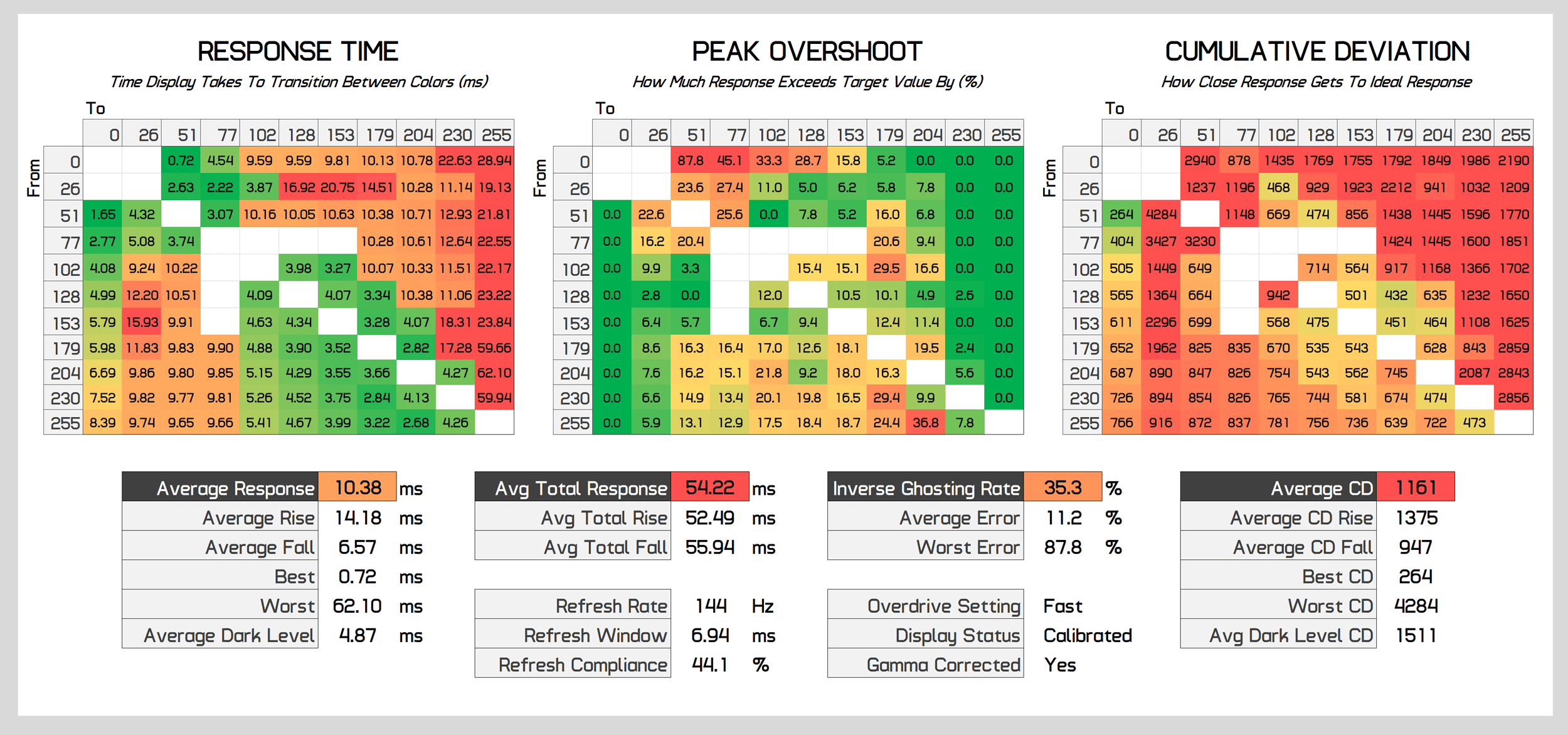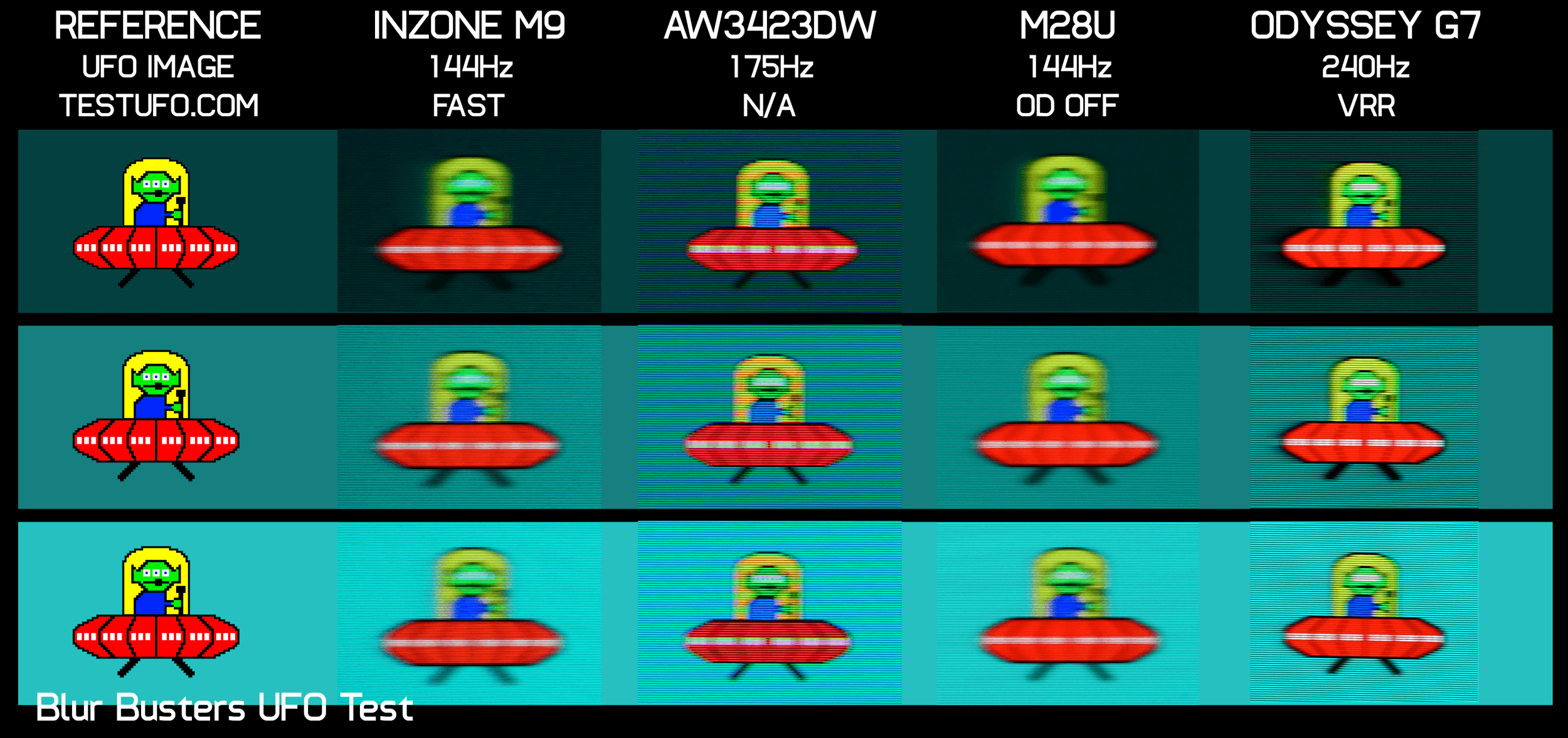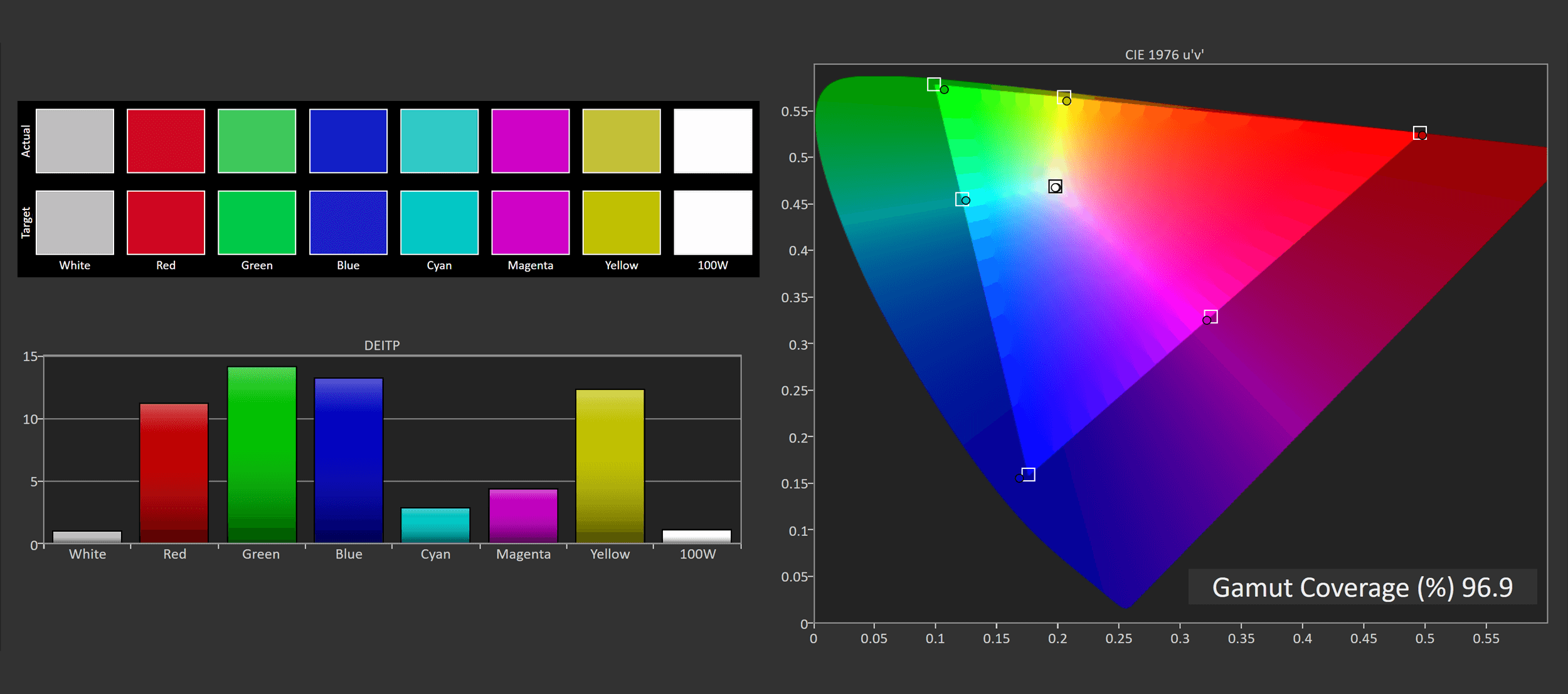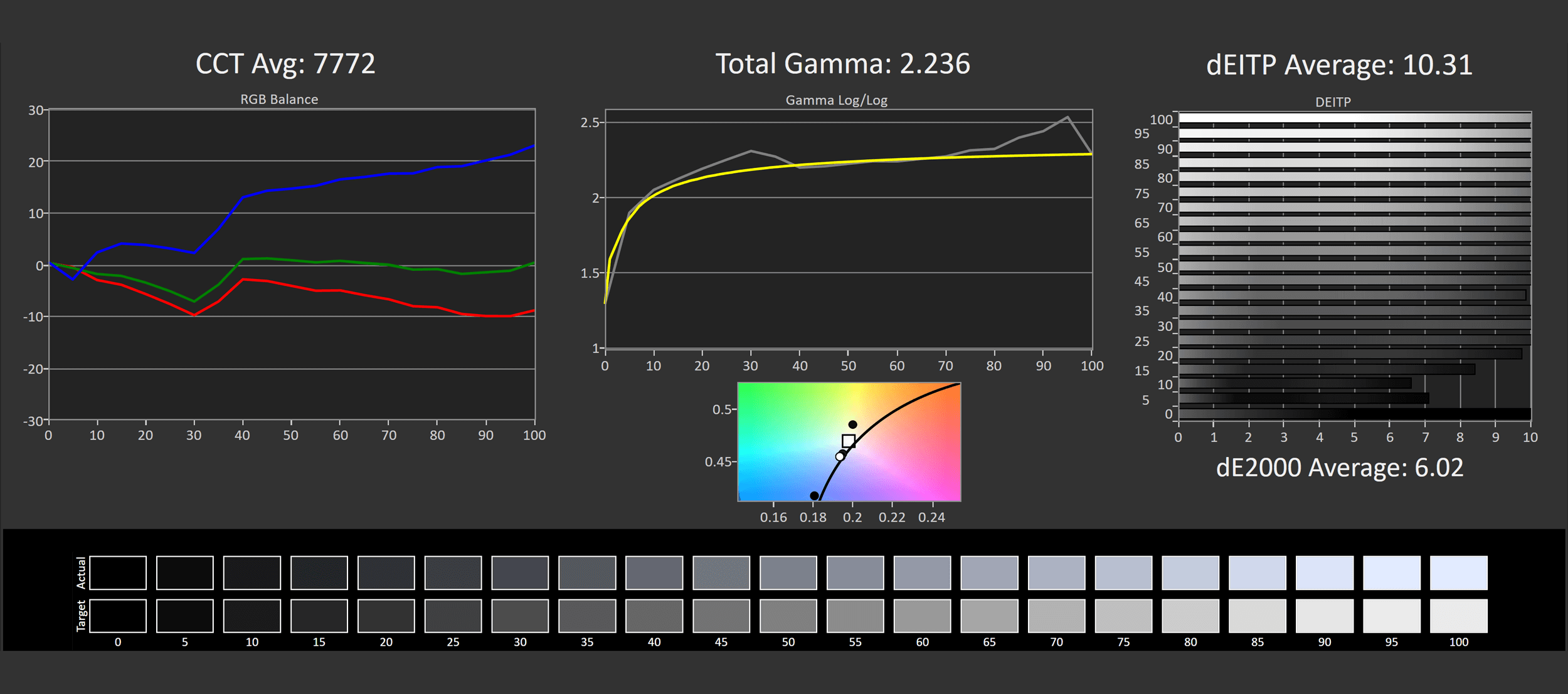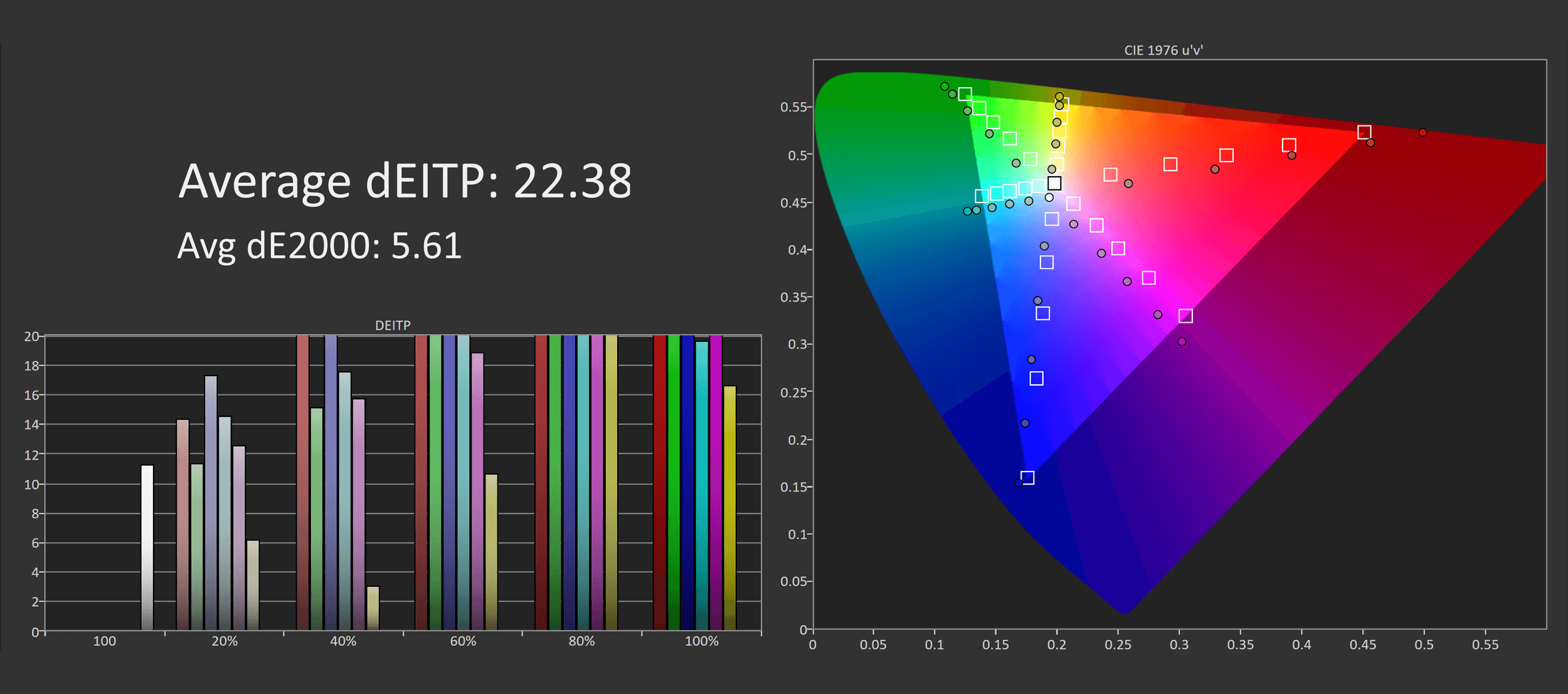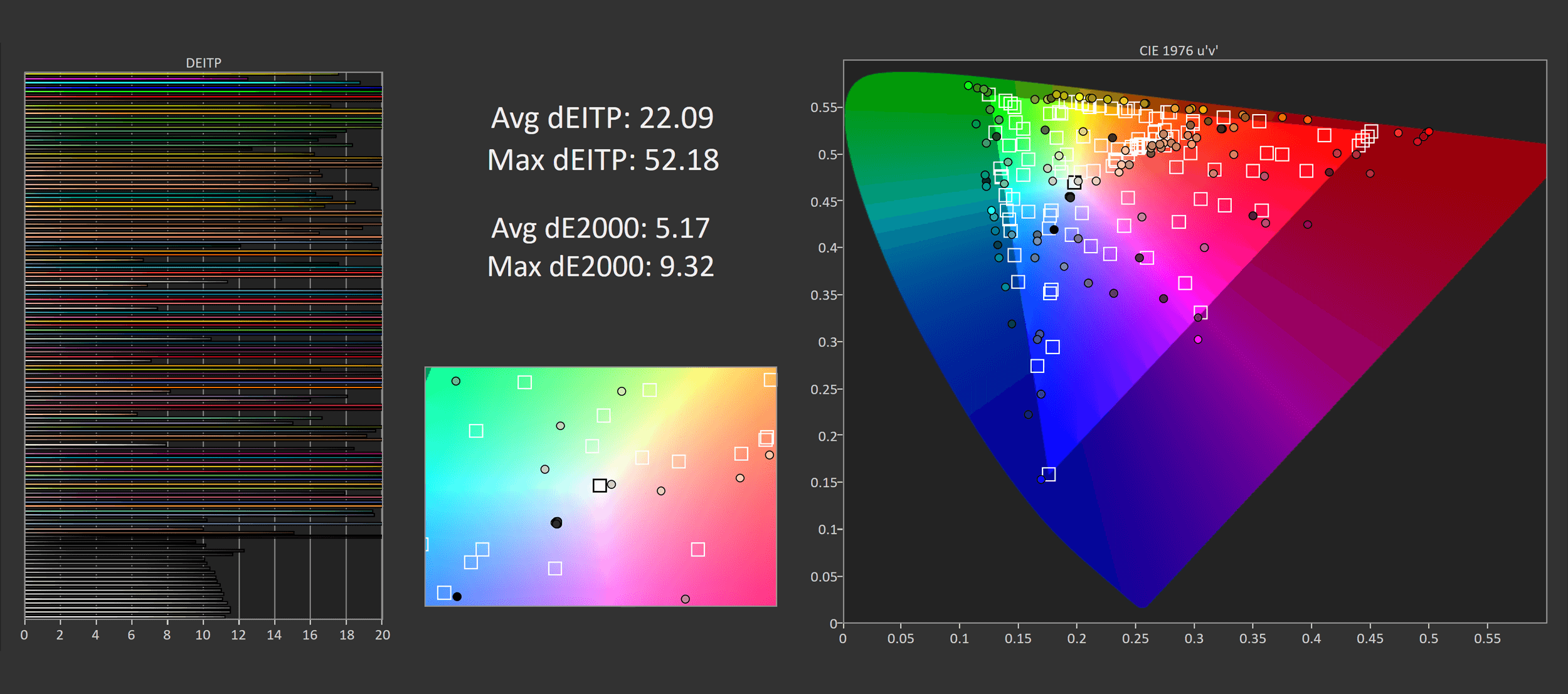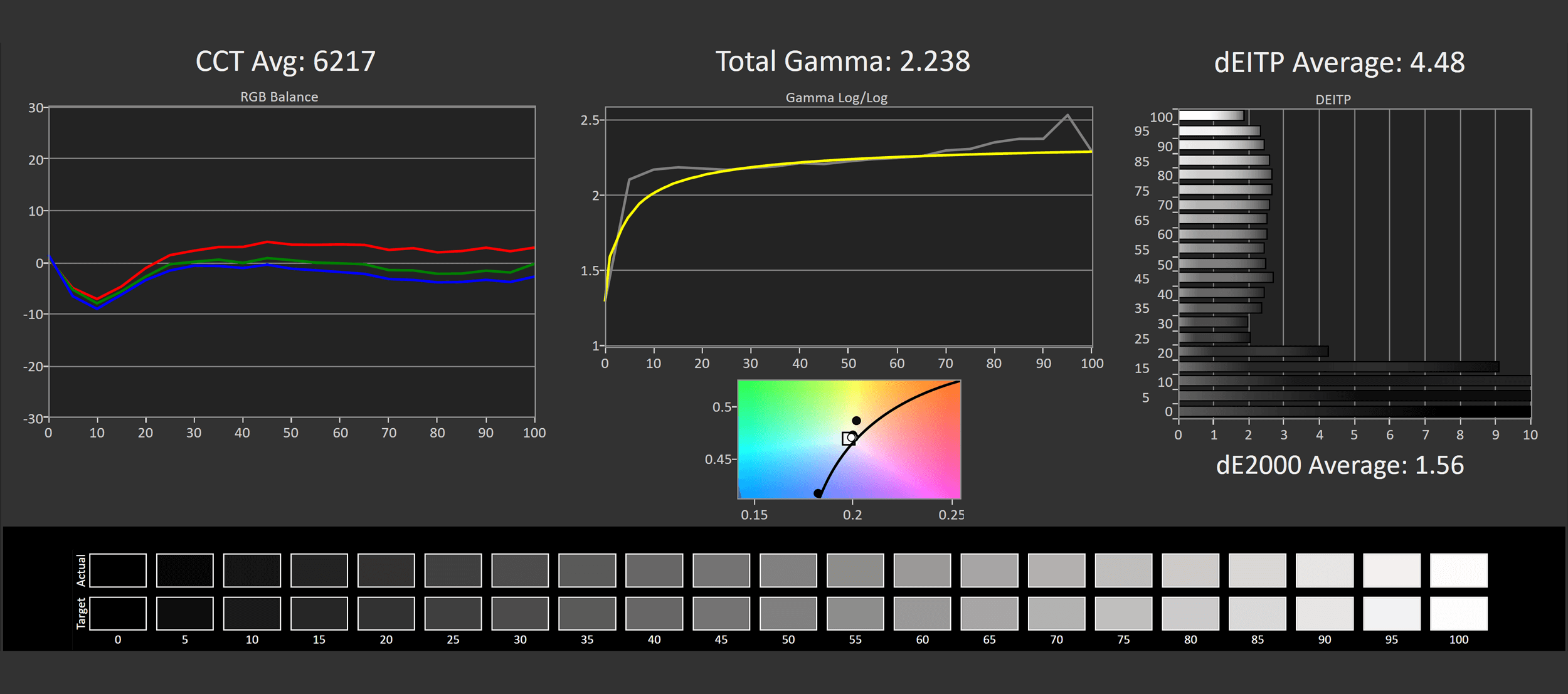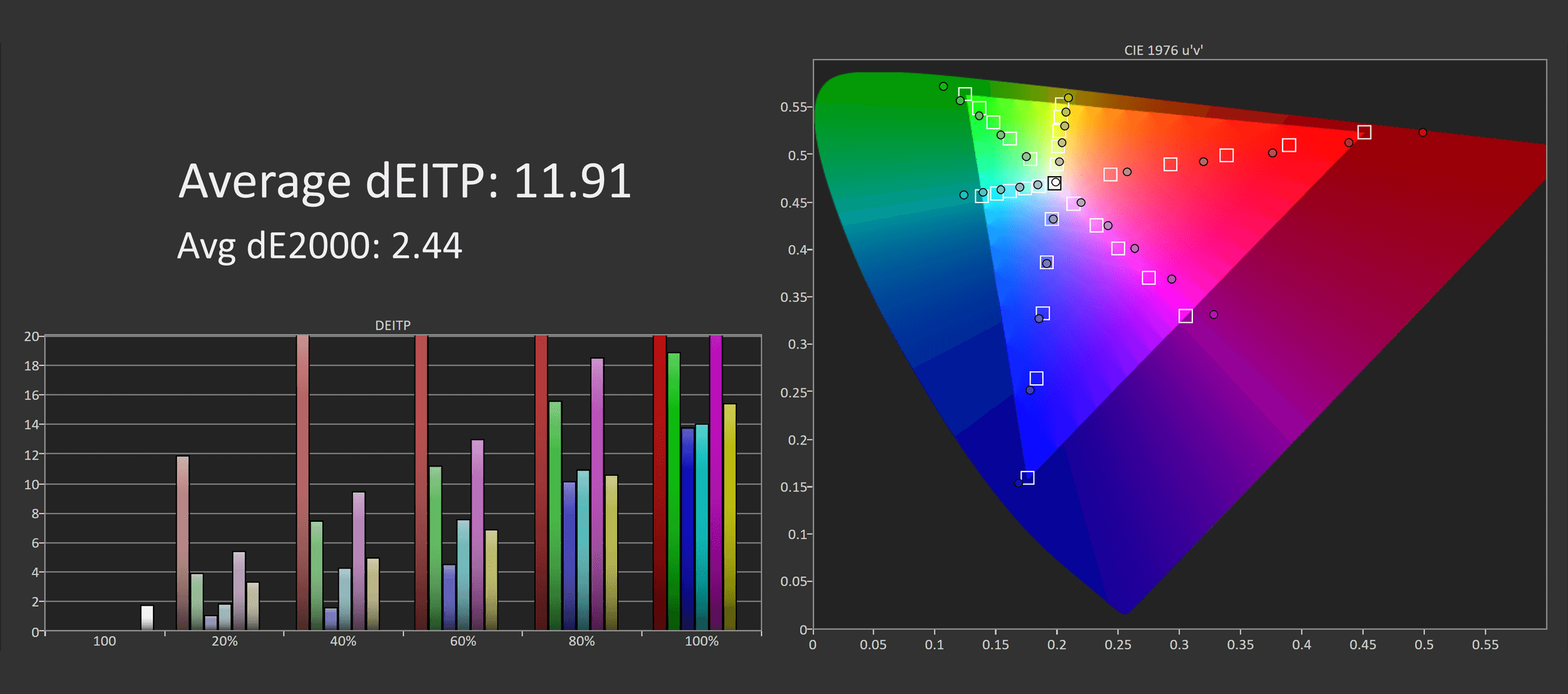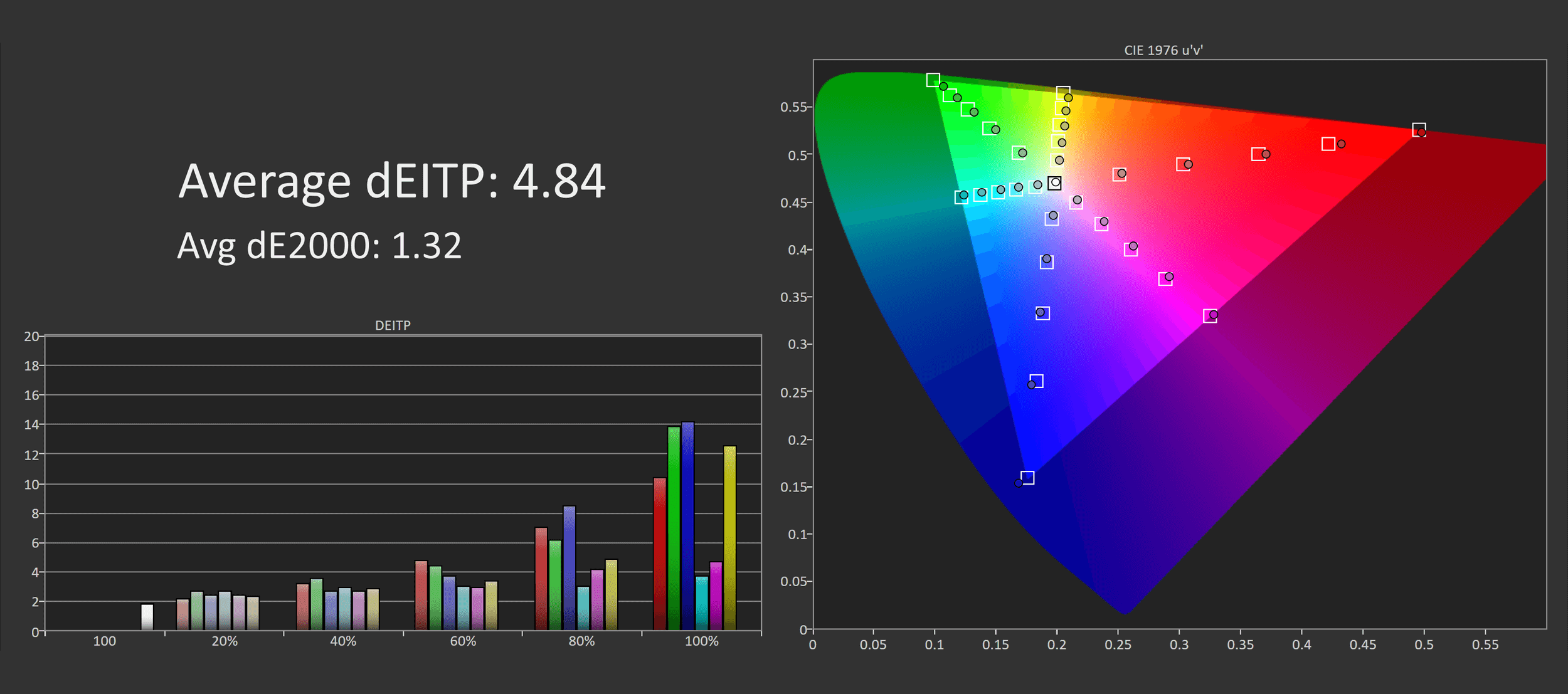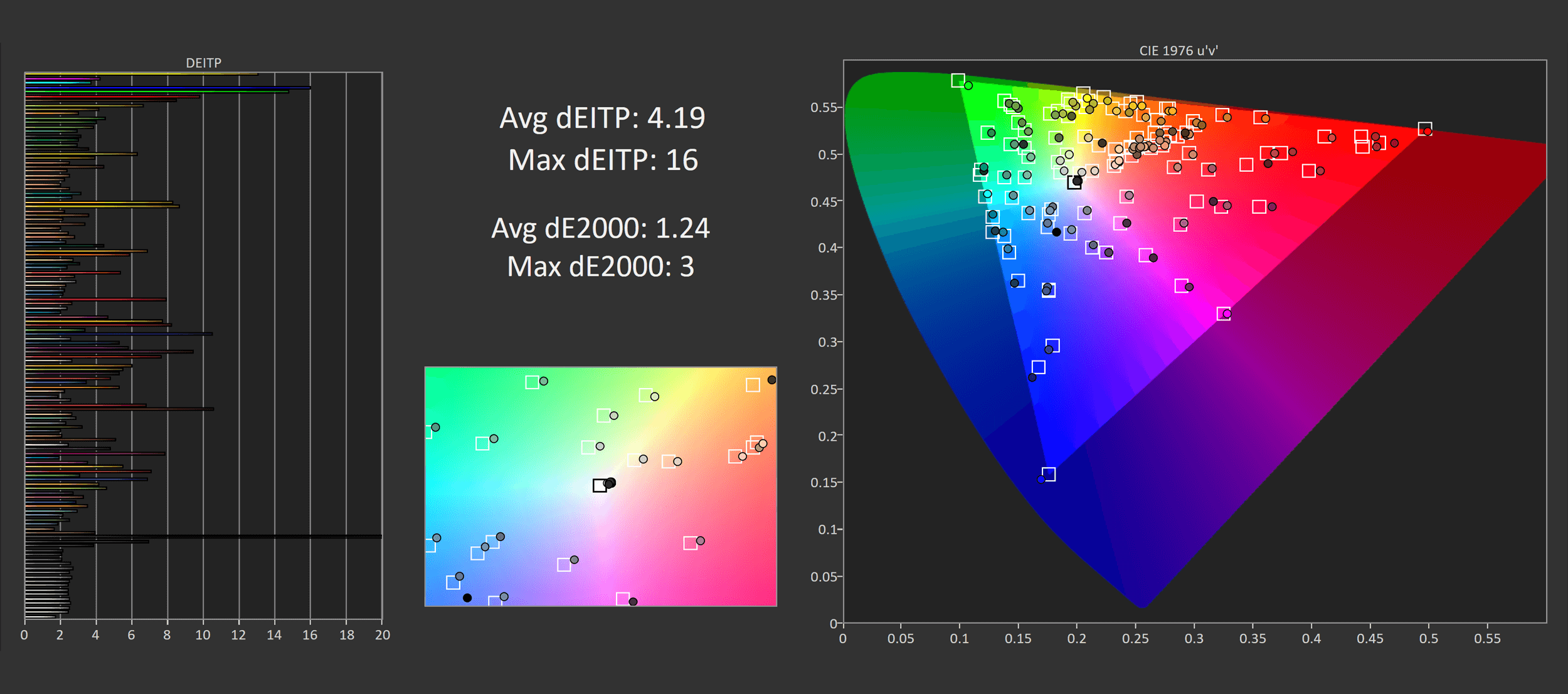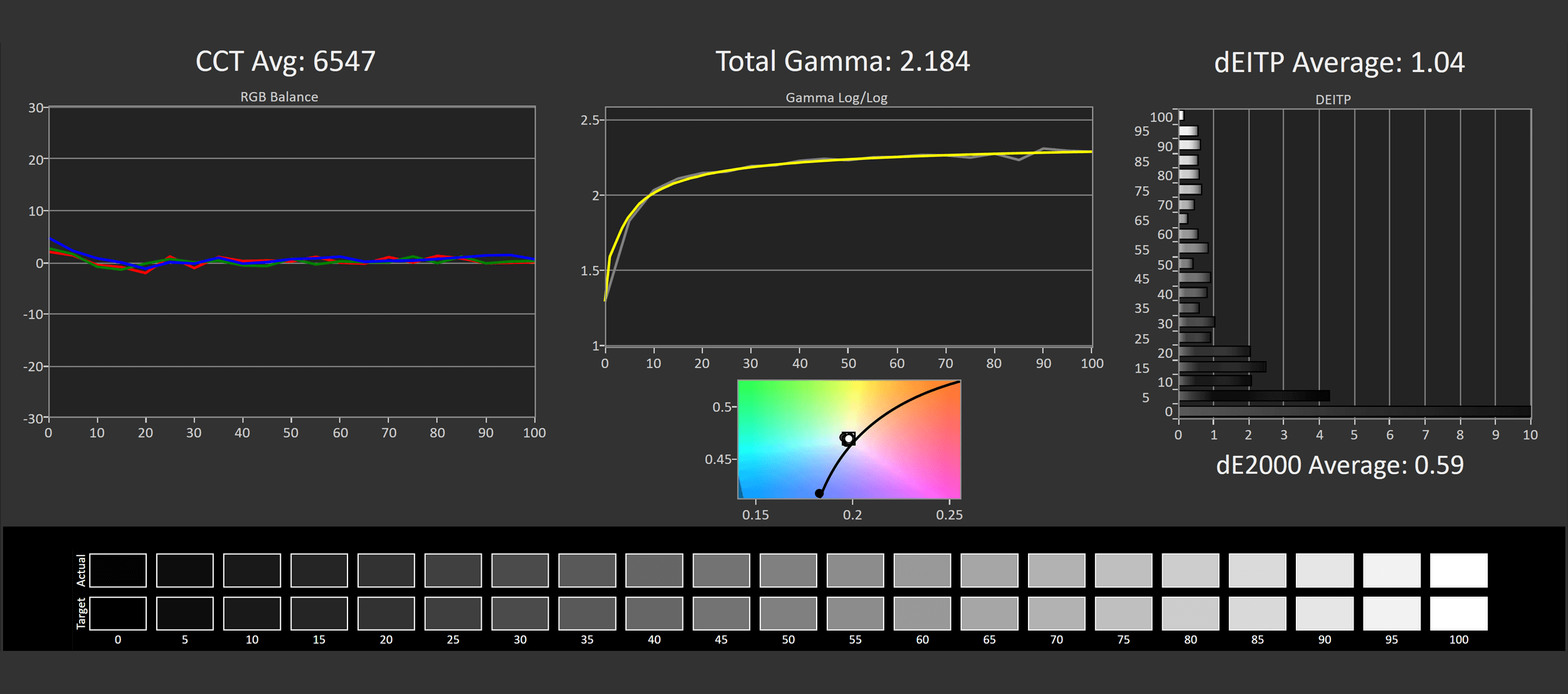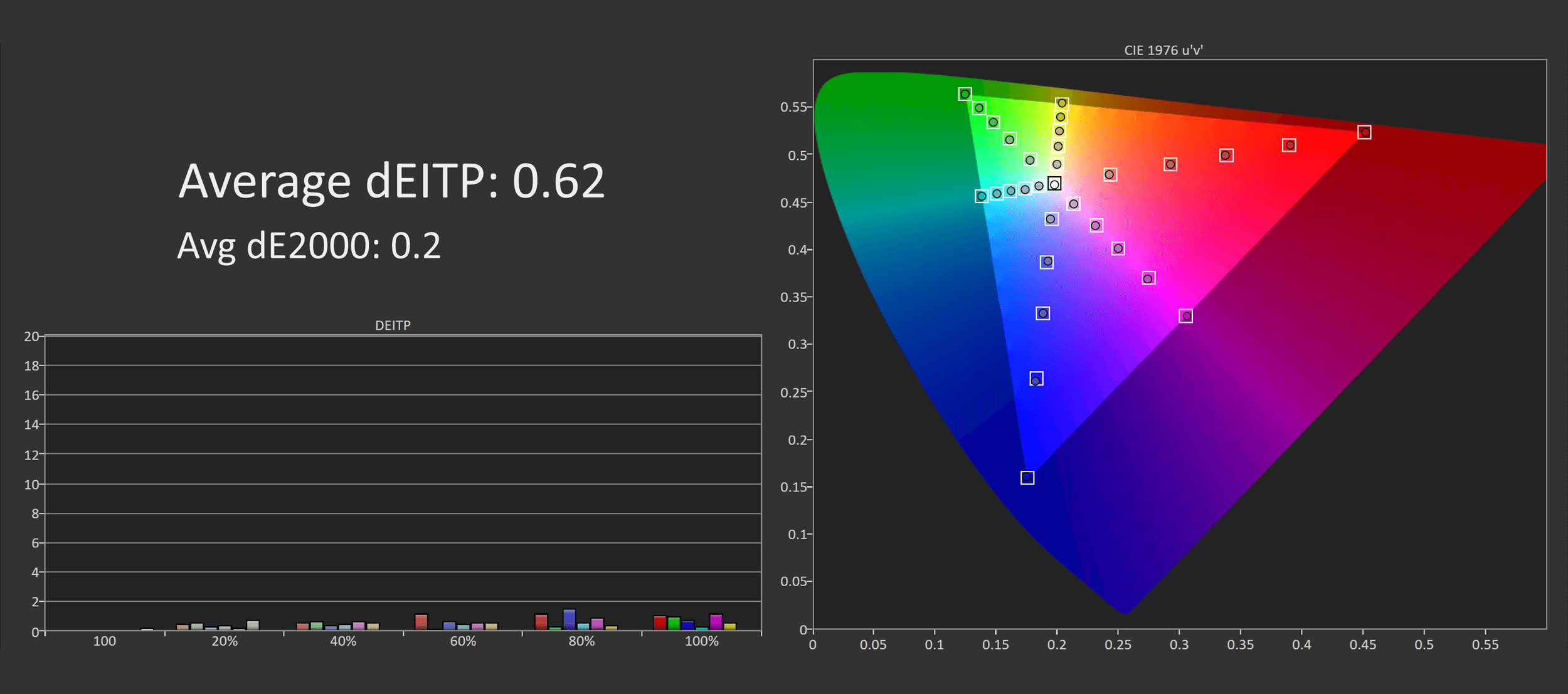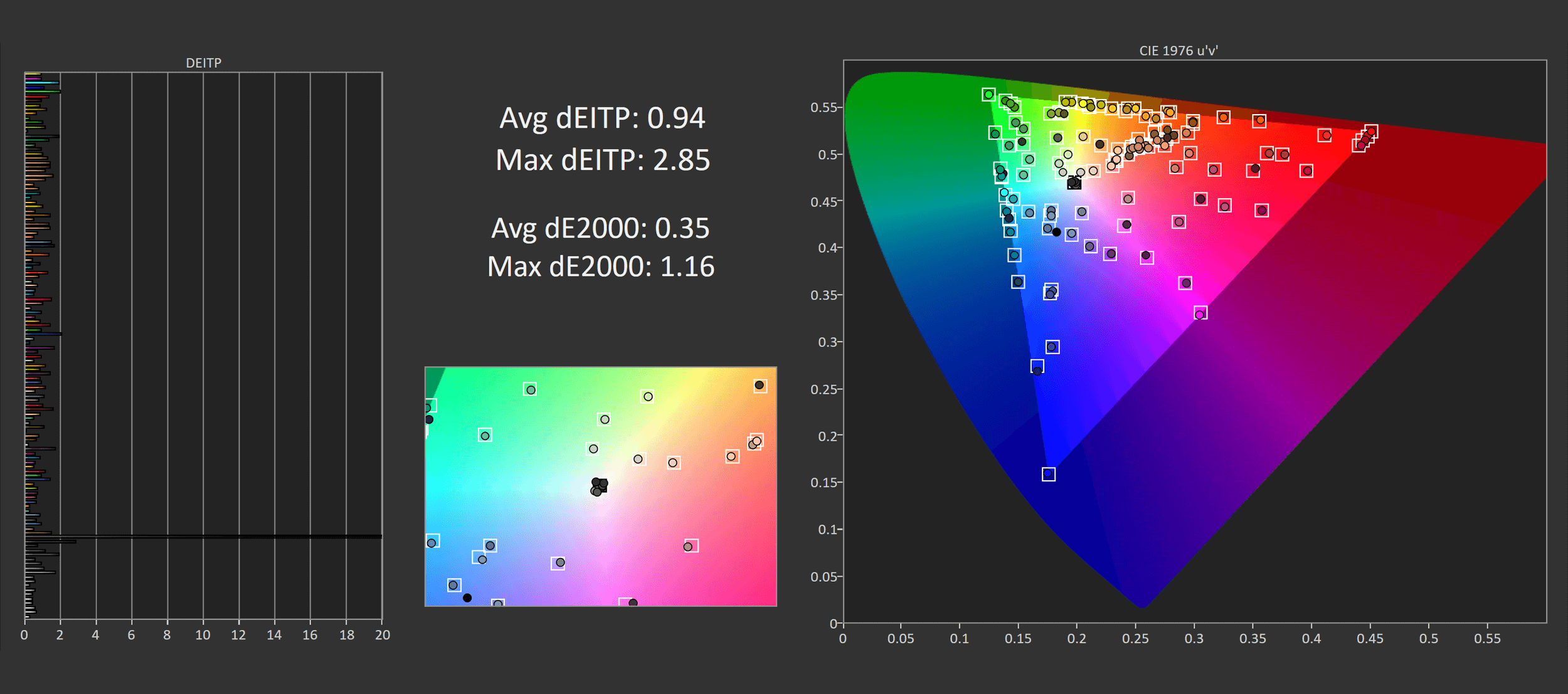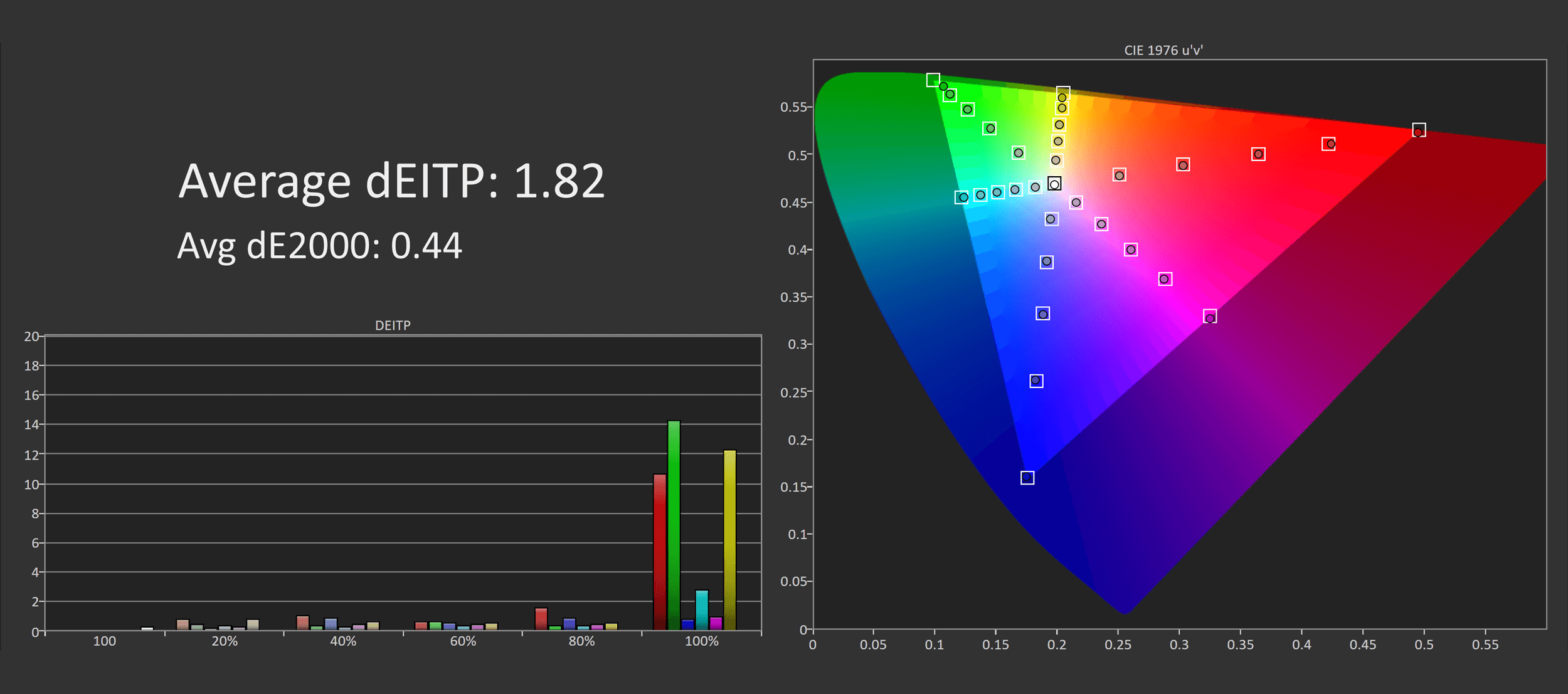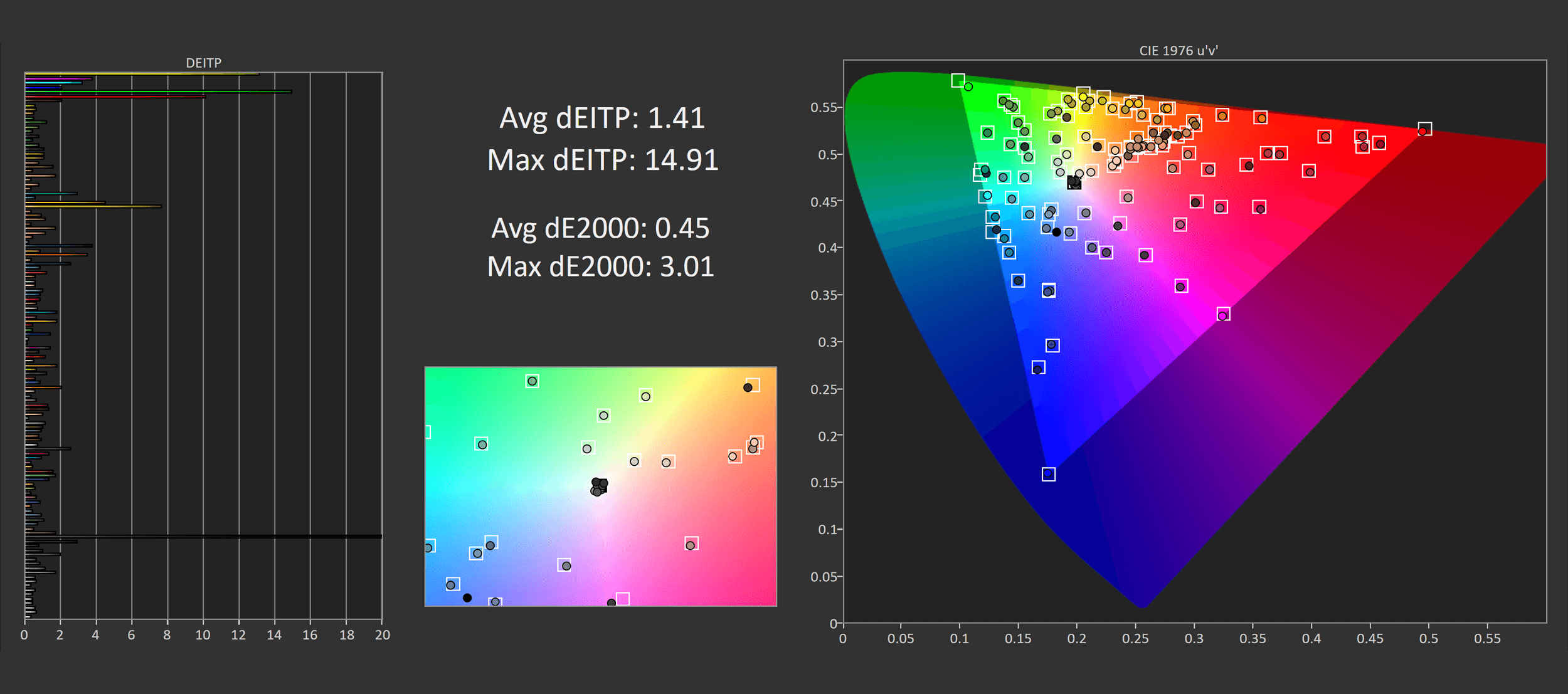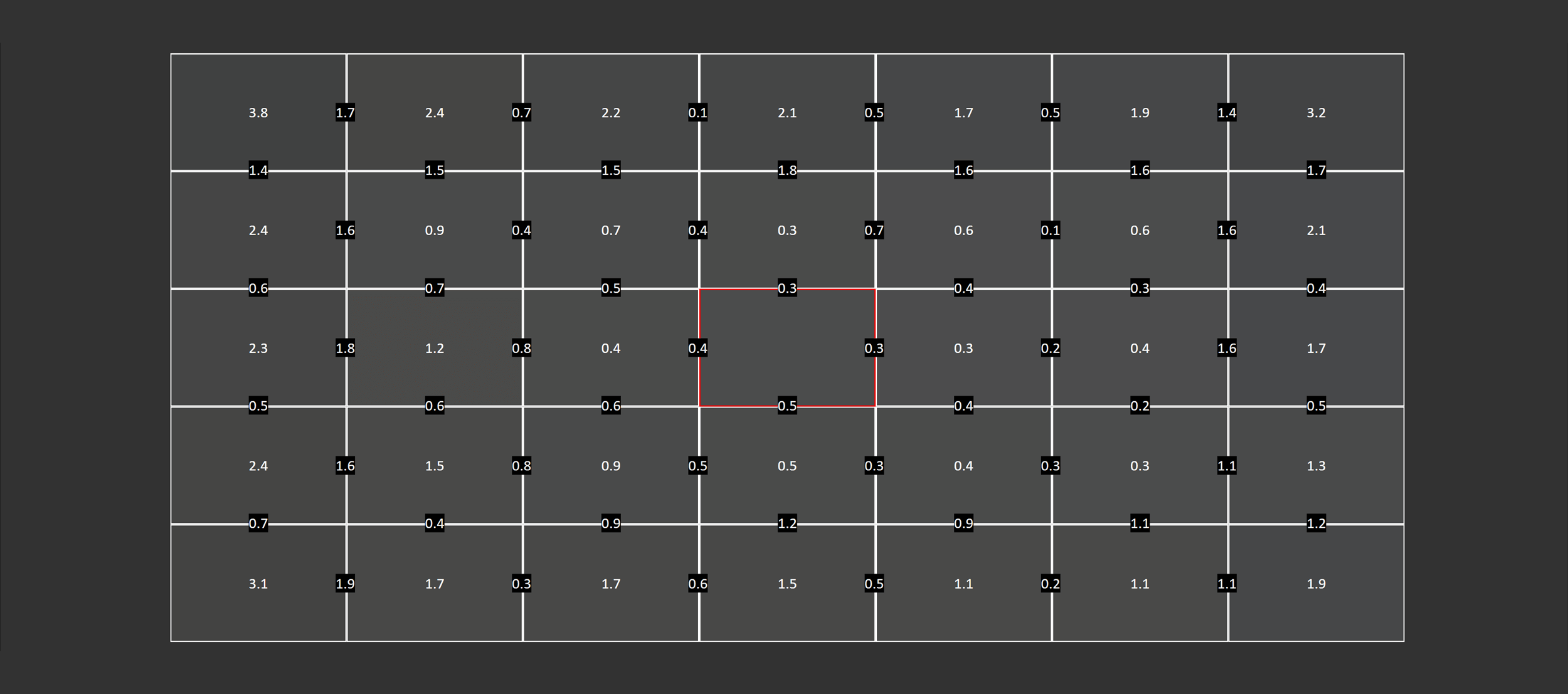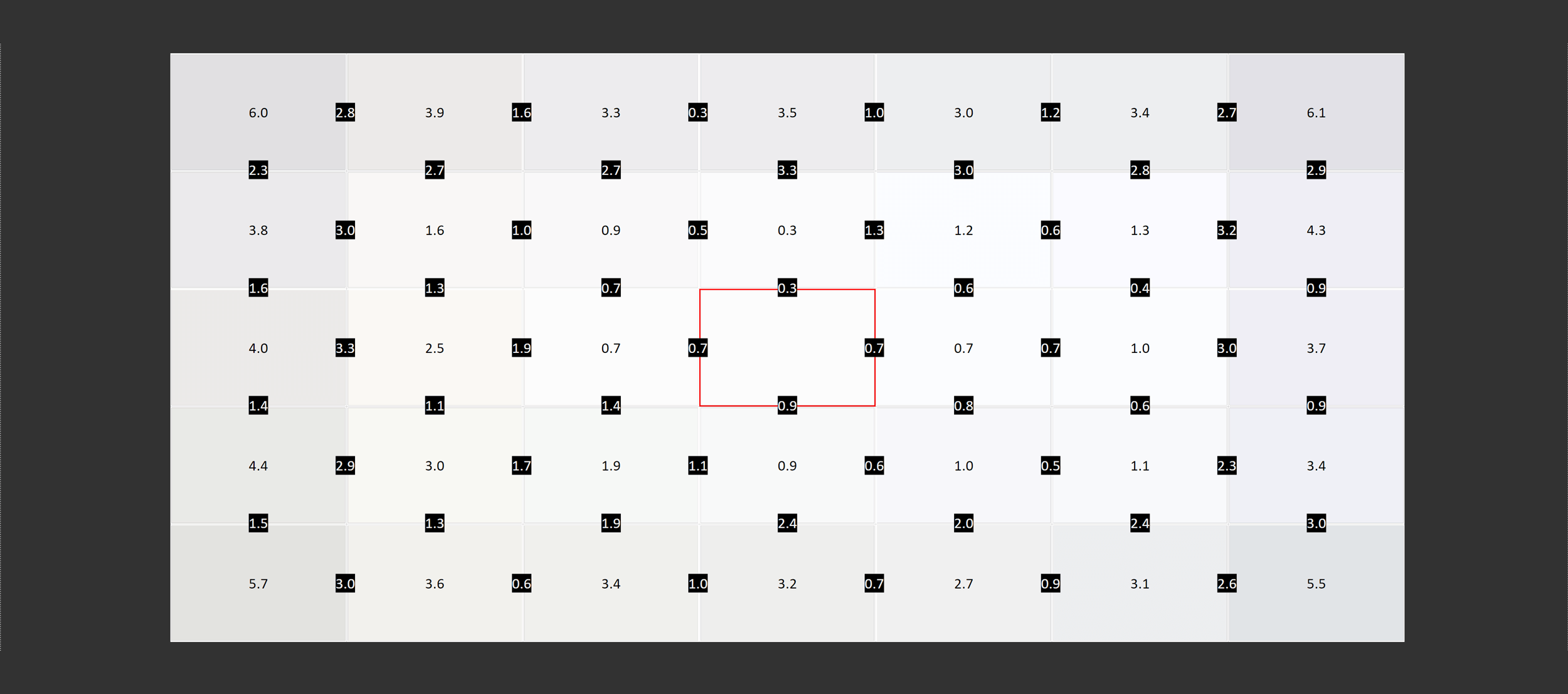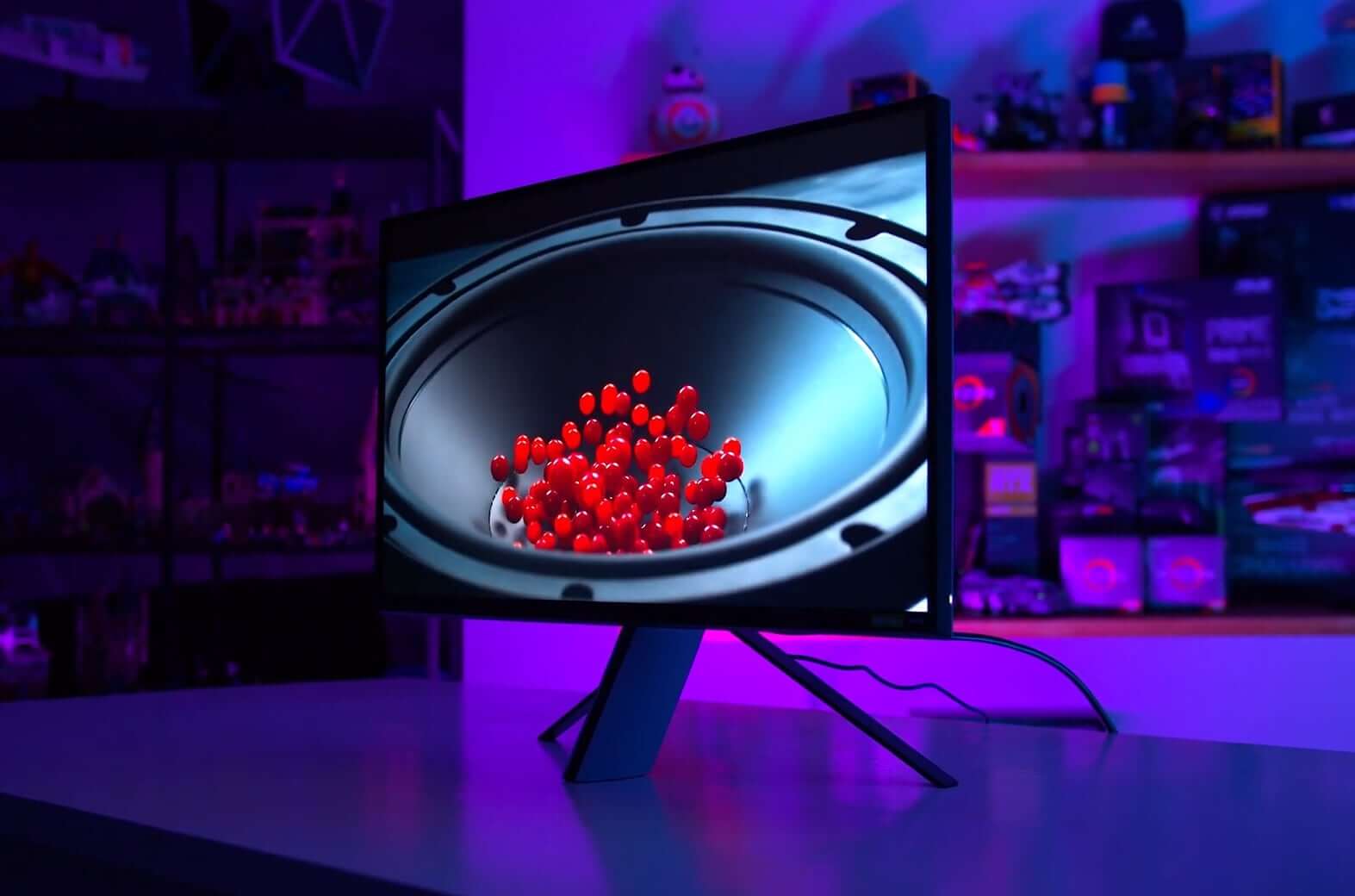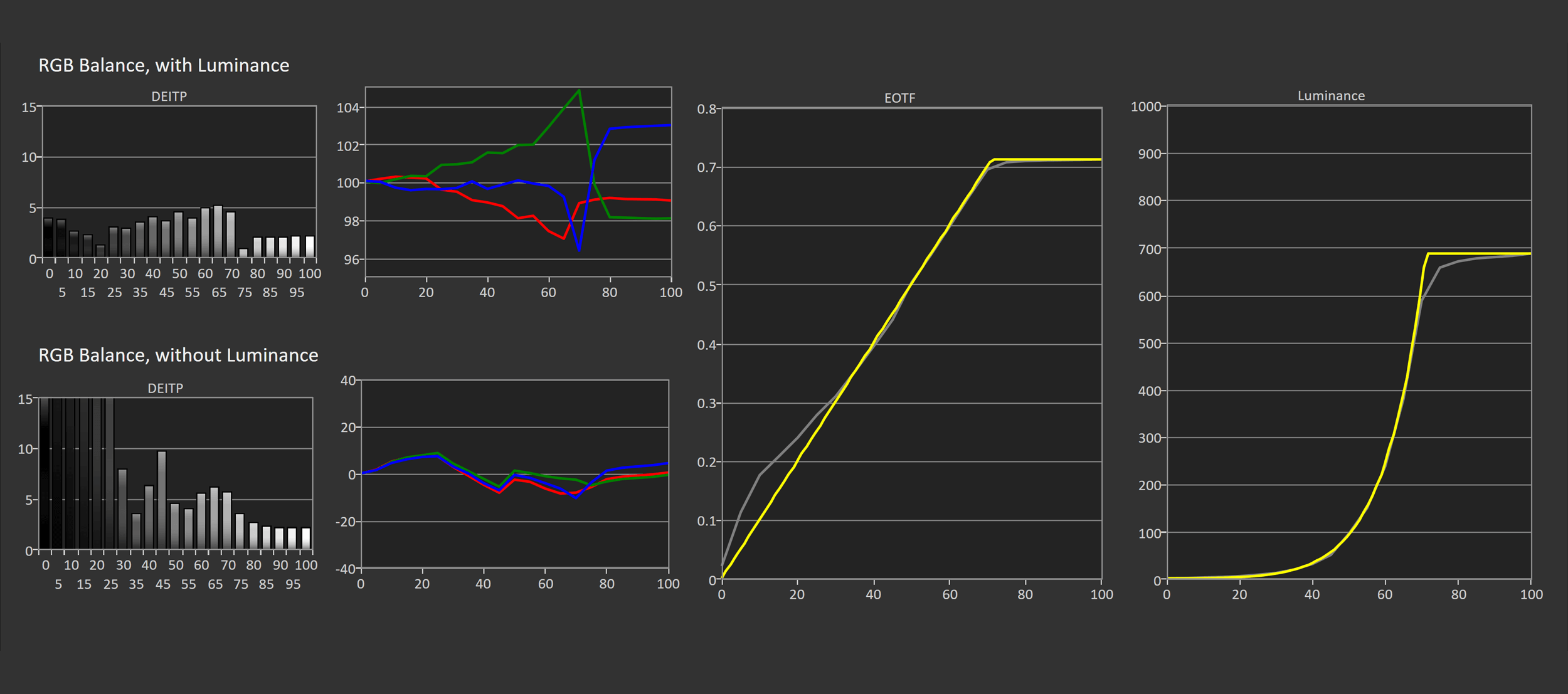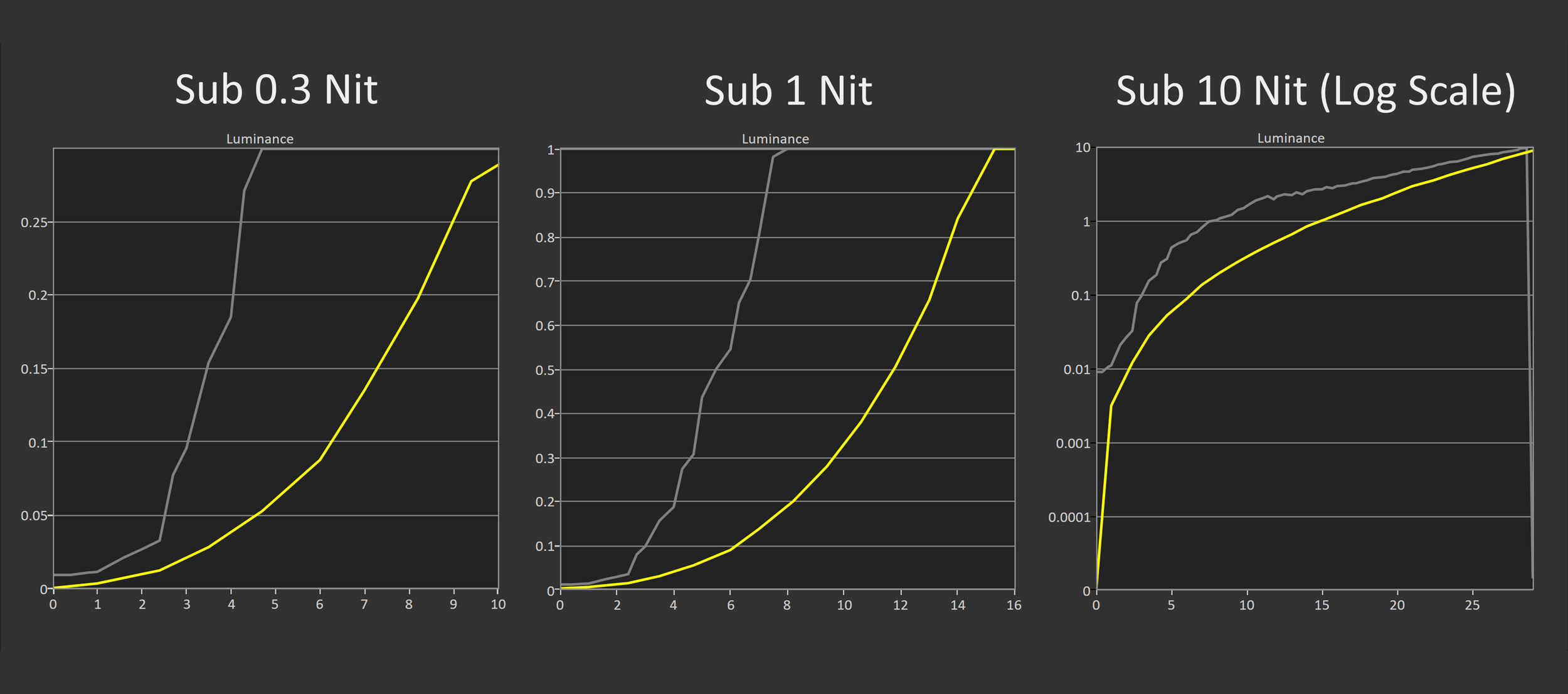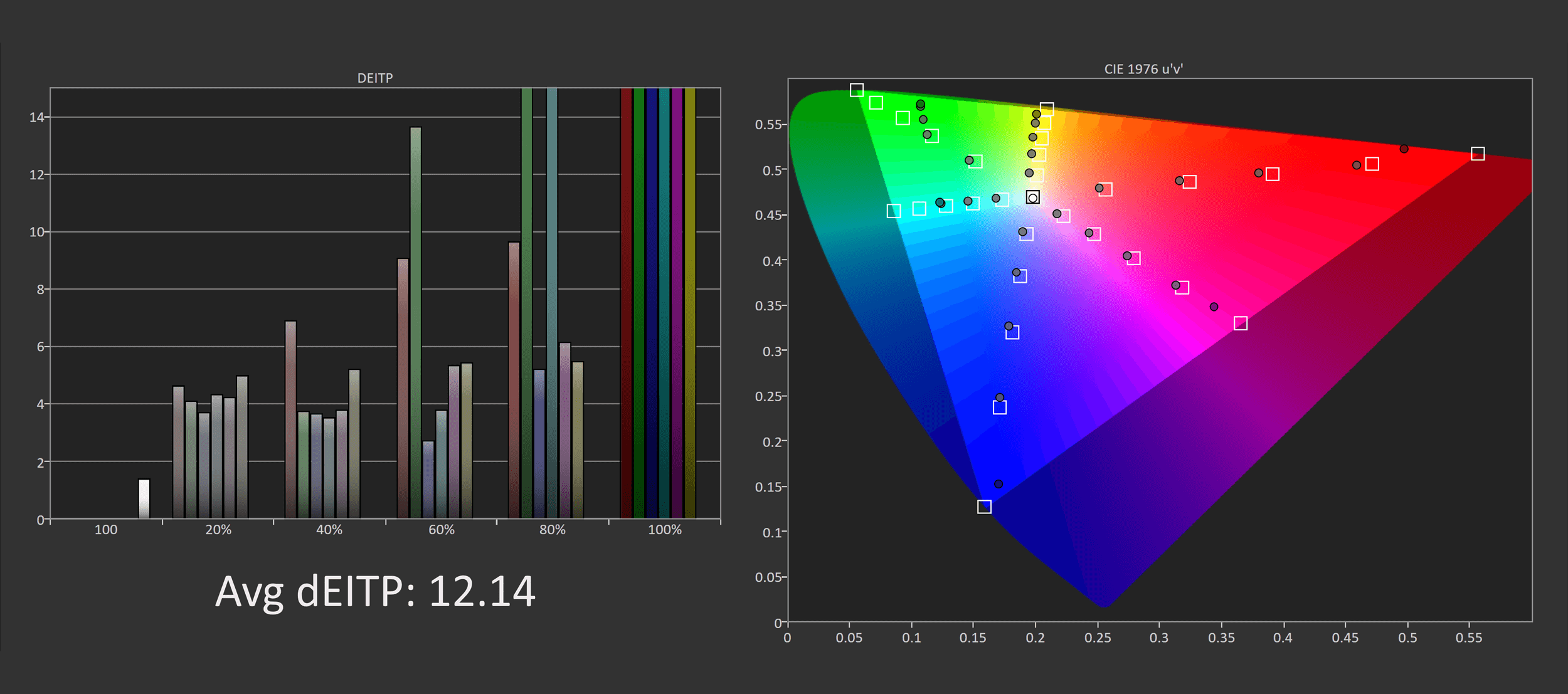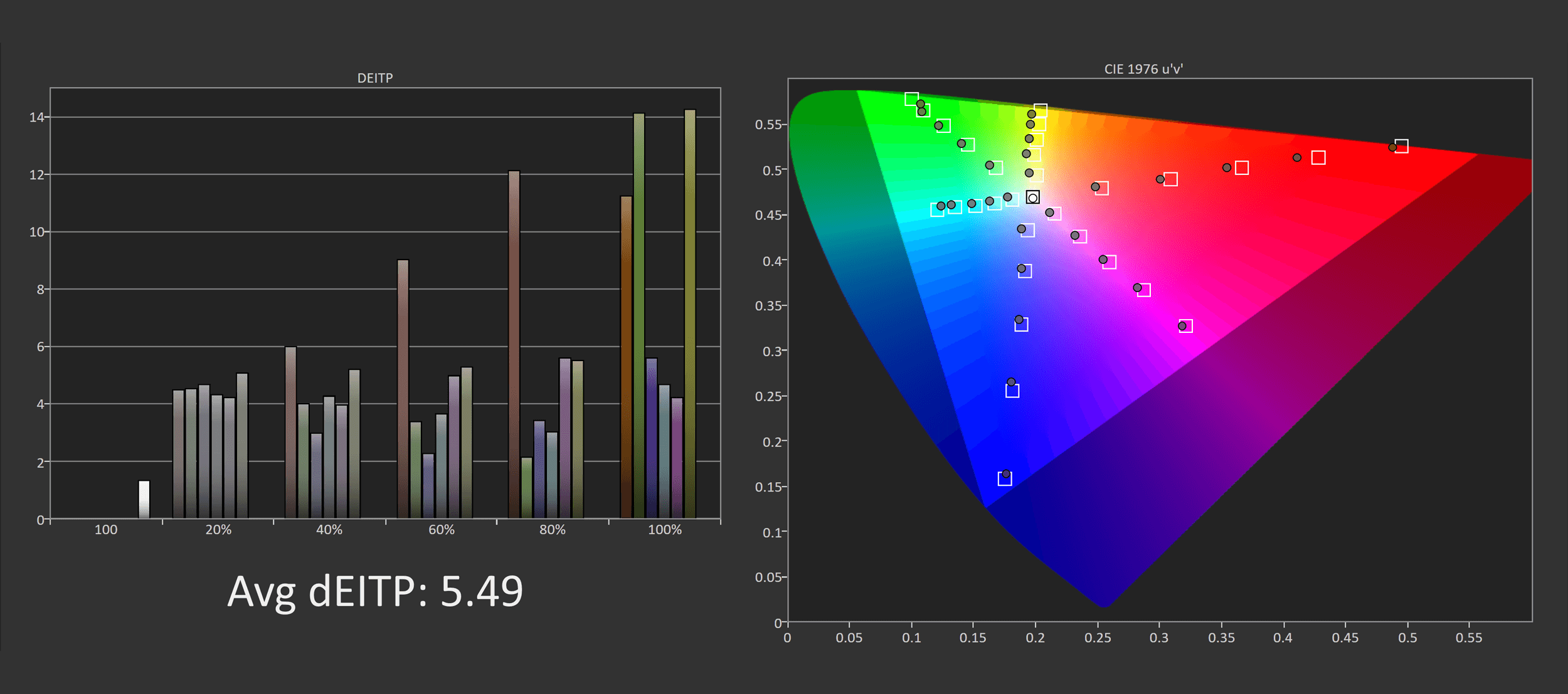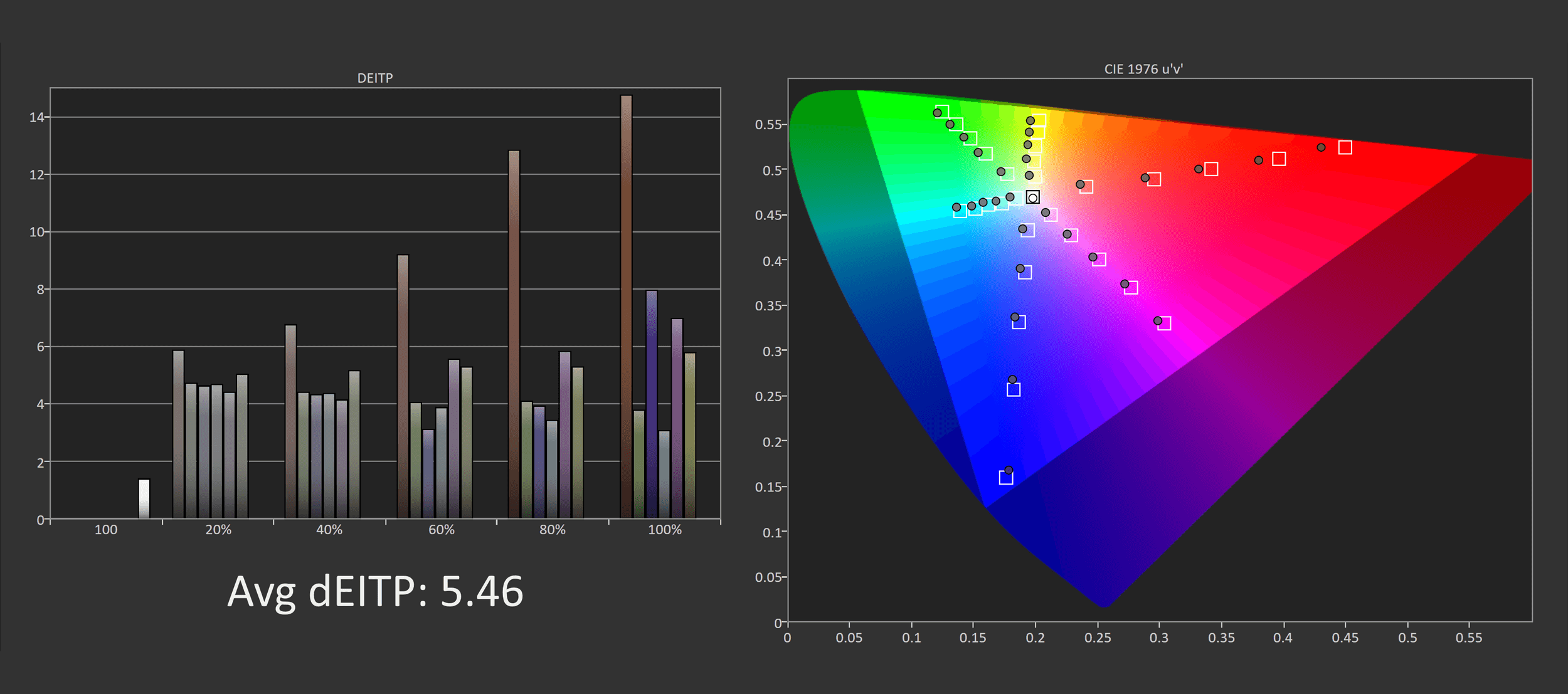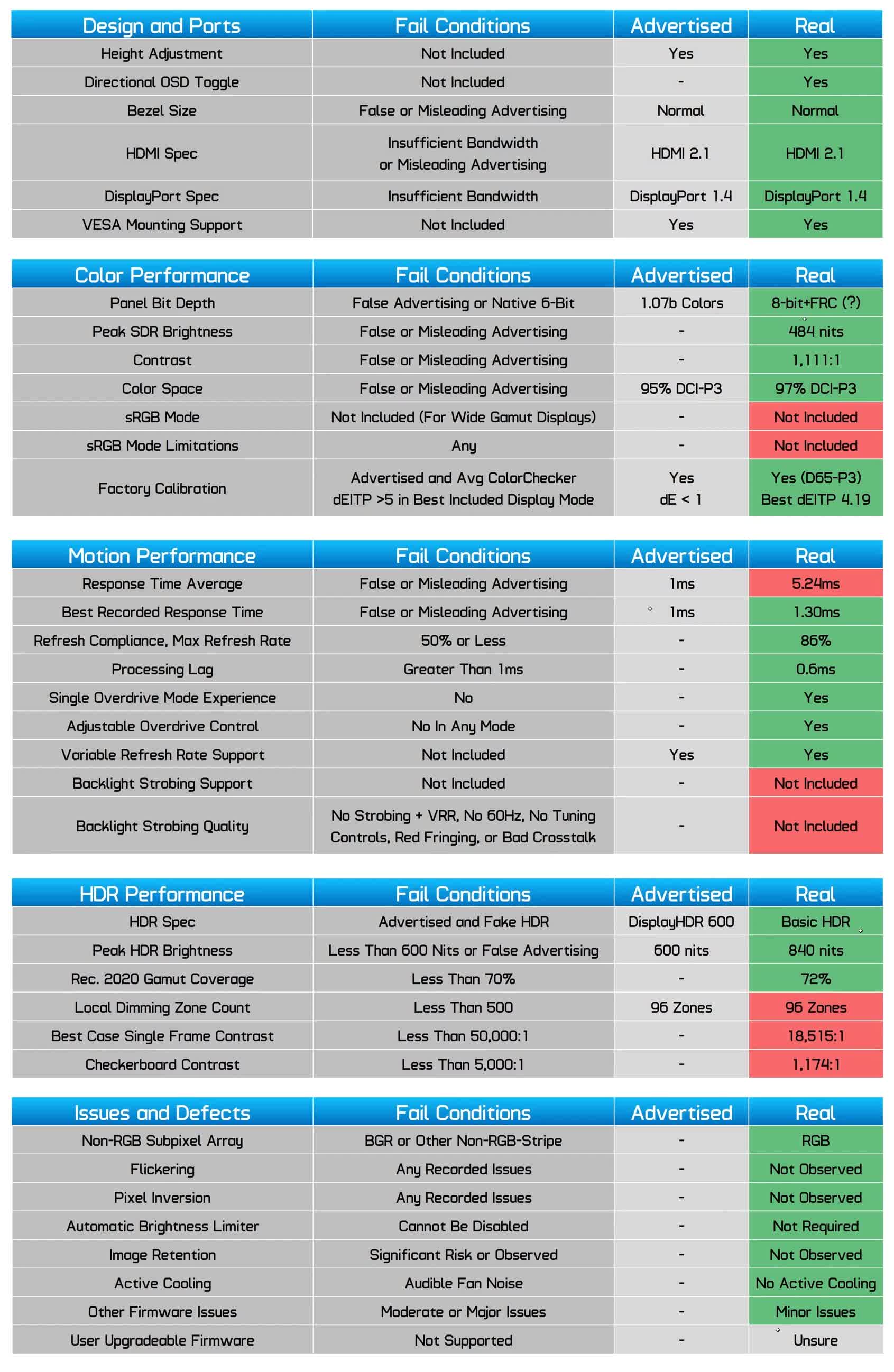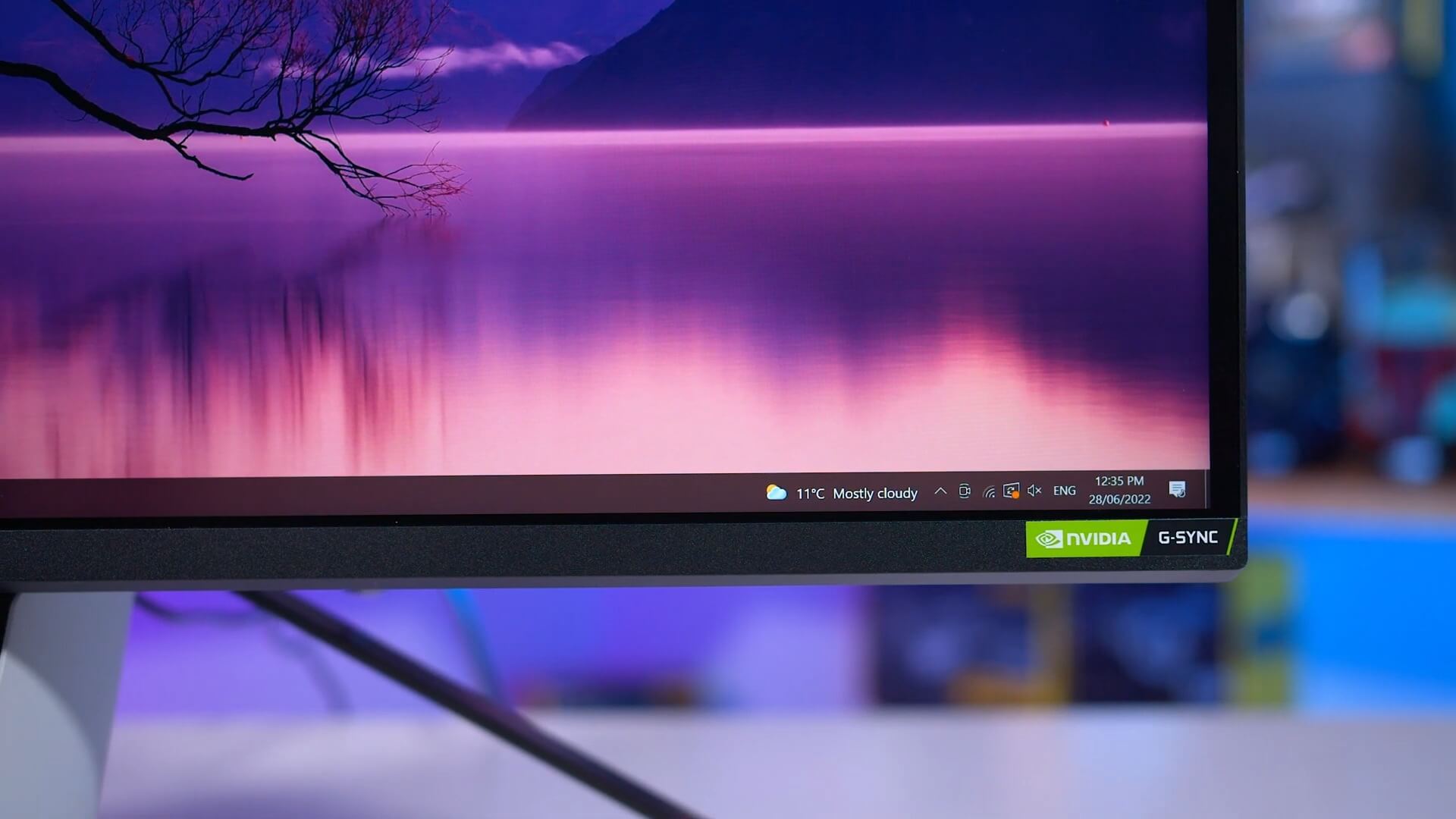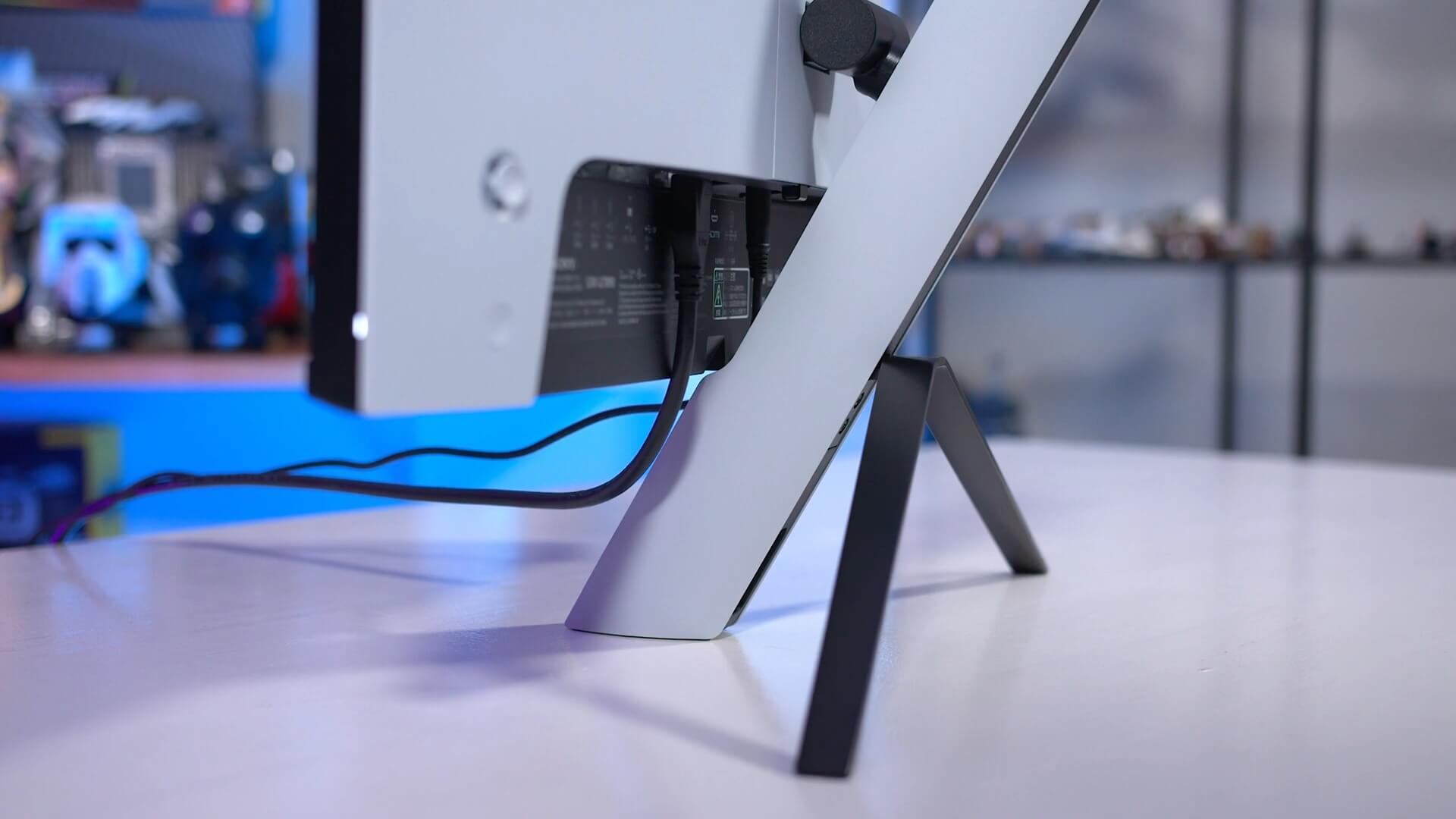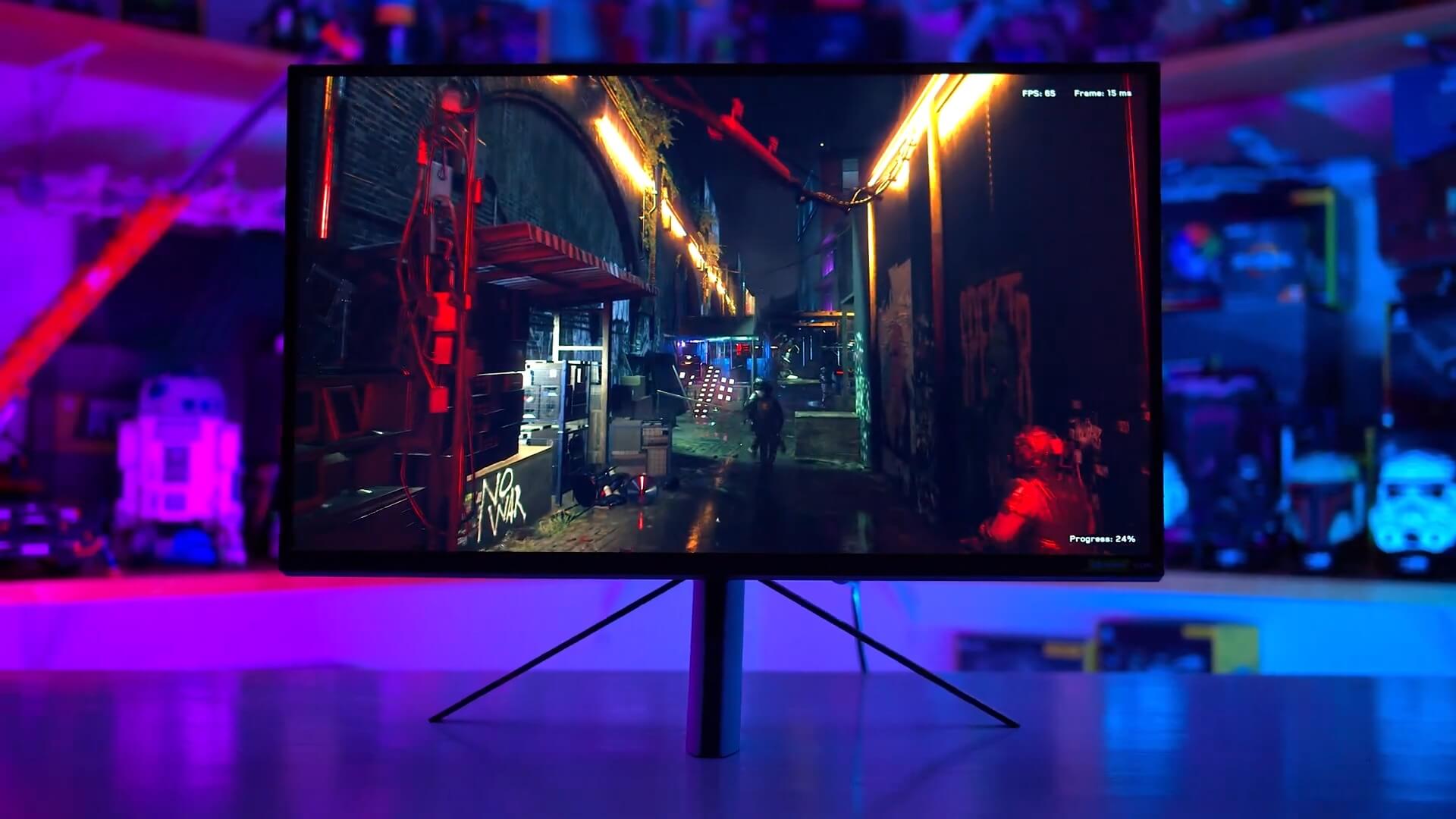Sony is back in the computer monitor market with their brand new Inzone series and today we’ll be testing out their top-of-the-line model, the Inzone M9. Back in the day, Sony was a massive name in computer displays with their Trinitron CRTs, but haven’t exactly done heaps in the LCD era. That changes today, because not only is Sony back in the gaming market, but they’re doing so with a monitor that offers unique features we haven’t seen before.
At first glance, the Inzone M9 spec sheet points to a typical high-end gaming display. 27-inch panel size, 4K resolution, IPS technology and up to a 144Hz refresh rate with standard adaptive sync variable refresh features. It also comes DisplayHDR 600 certified, 1ms rated response times, all the usual stuff you’d expect in this class. But this isn’t a regular 4K 144Hz monitor, because Sony has put real effort into improving one key area over its competitors: HDR.
You see, most monitors like this come with poor HDR capabilities. Edge lit local dimming, or no local dimming at all, are commonplace despite companies often achieving DisplayHDR 600 certification.
That’s not the case with the Inzone M9: this monitor packs full array local dimming with 96 zones, taking us a big step forward in HDR hardware for this class of display. Now, 96 zones isn’t heaps of zones, it’s not the 1000+ we see from flagship monitors, but with the Inzone M9 we’re finally getting a meaningful improvement to basic HDR hardware for gamers – and we hope it means the death of pathetic edge lit dimming.
Sony is offering this hardware for no more than you’d pay for other high-end 4K monitors, like the LG 27GP950 or Eve Spectrum 4K that we’ve reviewed and recommended before. The Sony Inzone M9 will hit store shelves for $900 in the next month or so, giving buyers the first sub-$1000 4K gaming monitor with full array local dimming of any kind. So let’s see how it stacks up and performs…
Design
We have to give Sony credit for trying something unique with the design. While this is intended as a computer display first and foremost, it’s clear that the style has been influenced by Sony’s PlayStation 5, with the curved white sections providing a contrast to the otherwise black plastic build. It basically looks like a PlayStation monitor and will complement that sort of setup nicely – plus it has some PS5 specific integrations, like auto HDR tone mapping and auto picture mode selection.
The overall design is understated and has a more pleasant aesthetic than most other gaming monitors: we like the slim bottom edge bezel on the front, and the clean rear section. Sony have integrated an RGB LED light bar along the back which isn’t the most useful inclusion, but it fits in well with the design. Overall, it’s reasonably well-built, too, like we would expect in this price segment.
The unique design does bring its own set of issues. Most monitors that use a tripod stand put the straight leg at the rear and the V section at the front. Sony flips this around which gives the Inzone M9 a unique look, the straight leg comes forward while the V is at the back providing support.
We don’t mind how this looks, but it does limit the ergonomic capabilities. Height adjustability is included, for example, but the maximum height isn’t very high. The stand also makes it hard to support swivel and pivot adjustment, so those aren’t included. Luckily you can VESA mount it.
For inputs, the Inzone M9 comes with DisplayPort 1.4 with DSC, USB-C supporting DP-Alt mode, and two HDMI 2.1 ports plus a smattering of other USB ports. DisplayPort is fine for running the monitor up to 4K 144Hz, but the HDMI ports are a bit interesting. Both support 40 Gbps of bandwidth, which is good for 10-bit 4K 144Hz, so there’s no issue here that 48 Gbps isn’t available, and you’ll get full compatibility with consoles like the PS5.
However, Sony hasn’t enabled a 144Hz refresh rate over HDMI for some reason, it’s limited to 120Hz even on PC, which seems to be more of a firmware limitation. We’d like to see 144Hz enabled for PC gamers over HDMI 2.1 via a firmware update as the ports should have the bandwidth for it.
For the OSD, Sony is thankfully using a directional toggle and their interface is easy to navigate. For a first re-entry to the gaming monitor market, it’s surprisingly feature packed, including all the options that most brands offer such as crosshairs, frame rate counters, black equalizers and even a KVM switch. The main omission is no backlight strobing support, which is difficult with an FALD backlight, but will no doubt be disappointing for those that like using strobing to increase motion clarity.
Display Performance
Speaking of motion clarity, let’s take a look at response times. Sony provides three overdrive settings, the first and default setting being Standard, which at 144Hz provides a 9ms response time average. Do note that we are testing with local dimming disabled for now, so this represents how the LCD performs without any backlight adjustments, and is closest to how the display will operate most of the time. No overshoot, so we’re looking at overdrive disabled behavior, and performance is only decent for 144Hz.
Moving up to the Fast mode at 144Hz, now we’re in business. The response time average has fallen to 5.24, and cumulative deviation is also good at right on the 500 mark that we like to see. There is a small increase to overshoot, but this won’t be noticeable while gaming, making the Fast mode the best mode to choose for high refresh gaming on this panel.
Meanwhile, the Faster mode is only included so that Sony can advertise a 1ms grey to grey response time. I’m not a fan of this practice as to achieve a best case response around 1ms, the display produces a high amount of overshoot and cumulative deviation becomes worse than the previous mode. For actual use, this mode is not recommended.
For gaming using a variable refresh rate, the Fast mode is also our preferred mode. Performance holds up nicely even down to 85Hz, where this same mode is still usable and delivers around that 5ms response average. At 60Hz, the Fast mode is okay and still usable, though some inverse ghost trails are visible in practice. If you’re concerned about this you can drop the overdrive mode to Standard, which removes these faint trails at the cost of speed, but we’d only recommend doing this for gaming at a locked 60Hz. Variable refresh gamers will still benefit from the Fast mode, particularly at higher refresh rates.
Based on this testing I’d say for the most part the Inzone M9 does have a single overdrive mode experience, in that variable refresh gamers don’t need to adjust the overdrive settings to get the best experience across most of the refresh rate range. The only exception to this is playing specifically at 60Hz, but we’d be comfortable using the Fast mode for all my gaming needs.
As for what happens when the FALD backlight is enabled, this becomes a more complicated discussion, as the response behavior you’ll see is not only dictated by a specific pixel, but by the pixels around it that encompass the local dimming zone. Both the backlight and the LCD layer work in tandem to produce the response and change in color value.
What this creates is a chart that looks like this. What we’re seeing here is a “worst case scenario,” where the entire local dimming zone is a single color value that changes. In reality what the backlight zone does will be dictated by an image processing algorithm and most of the time the transitions aren’t as bad. But in these worst case scenarios you’ll spot some interesting behavior.
When the RGB value is close to or at 0, this is when the backlight does the most work, and we see a big increase in response times. This is because the LCD transition and backlight transition aren’t perfectly in sync, the delay between each element beginning to transition causes response times to elongate. There are also some areas where the FALD backlight does some of the transition work, but not as much as a transition from full black, such as these areas here and here. There were also a few transitions with odd behavior that were too difficult to measure, which we’ve omitted. But then for some other transitions the FALD backlight effectively does nothing, and so the main response time is dominated by the LCD layer’s speed.
The big question is whether the FALD system affects motion clarity while gaming. When using this display for gaming, we’d say for the most part you’ll see transitions more like the earlier charts, where the backlight is only making minor adjustments that don’t have a significant effect on response times. However there are some times, particularly when an entire zone changes from dark to bright, that you can feel the display is a bit slower with local dimming enabled (in this case set to High). We don’t think this slowdown outweighs the benefits of having local dimming, and in any case if you are concerned about speed – for example if you’re playing a competitive game – you can simply disable local dimming to get the best performance on offer.

Compared to other displays (and these are results with local dimming disabled), the Sony Inzone M9 sits in the middle of the chart for best performance at the maximum refresh rate. This result is very similar to many other of today’s best normal gaming IPS panels, which typically vary between 4 and 6 ms for response times. Factoring in overshoot, the Sony M9 is similar to products like the Samsung Odyssey G7 S28 and Asus VG28UQL1A, which are both 4K 144Hz monitors. And it’s good to see that performance is better than some other premium HDR monitors like the Acer Predator X27 from several years ago, and the newer and very expensive Asus PG32UQX.

Average performance is very solid, again sitting close to other 4K 144Hz monitors that we’ve tested and better than previous products like the PG32UQX and Predator X27. The advantage the Inzone M9 has is lower overshoot across the refresh range than competitors such as the M28U and Odyssey G7 S28, even if response times are slightly worse. We also see a superior experience to LG’s 27GP950 and the Eve Spectrum 4K, which occupy a similar price point. This is because the Inzone M9 has tighter control across the refresh range and a better single overdrive mode experience, more in line with the new 28″ series of displays using Innolux panels.

For average cumulative deviation, the Inzone M9 is a pretty typical monitor that we think is quite competitive with other monitors. The best offering from a similar display type is the MSI MAG281URF which has 12 percent better cumulative deviation across the refresh range. This isn’t noticeable in real world usage, so the M9 ends up with a decent result especially as it doesn’t end up on the side of overshoot. However, performance is 20% better than the Predator X27 and 42% better than the PG32UQX, which are more noticeable numbers, especially in the case of the PG32UQX. So among FALD options this display is very respectable.


At a fixed 120Hz the Sony M9 performs well, similarly in response times to other options but with lower overshoot and therefore less inverse ghosting. This is especially good news for PlayStation 5 gamers looking to use the 120Hz mode over HDMI 2.1. As for fixed 60Hz gaming, we recommend reducing the overdrive setting to Standard, which does see the Sony M9 fall down the charts a bit. A mode between Fast and Standard could have been better optimized for 60Hz gaming and we’d say this is somewhat of a weakness compared to the 28″ models at the top of the chart.

For input latency, the Inzone M9 is a typical monitor in that its processing delay with local dimming disabled is less than 1ms, in line with the majority of other displays in this chart. Like with a lot of 144Hz monitors, the main limiting factor for latency is not the amount of time it takes for the display to process, but the modest refresh rate. Choosing a 240Hz display over 144Hz will help in this area. However I should note here that if you do enable local dimming, the processing delay increases to about 8 milliseconds – for competitive gaming that’s latency sensitive I would recommend keeping the FALD backlight off, though for single-player games using the panel’s HDR capabilities, 8ms of lag is playable.

Despite featuring an FALD backlight, power consumption is very reasonable. A lot of this can be attributed to the lack of an Nvidia G-Sync module, which has been used previously for most FALD gaming monitors. While not a huge deal in the grand scheme of things, I was impressed with this result.
And just quickly before we move on to color performance, here’s a quick look at the UFO Test results. The M9 doesn’t support backlight strobing but here’s a visual guide.
Color Performance
Color Space: Sony Inzone M9 – D65-P3
Moving now to color performance, the Sony Inzone M9 sports a wide color gamut with 97% coverage of the DCI-P3 color space, a good result for people wanting to use both the standard sRGB and also P3 color spaces for work or content consumption.
There’s also good “oversaturation” potential if that’s how you like your display to look. However, you won’t see amazing Adobe RGB color space coverage, and in total this monitor tops out with 72% coverage of the very wide Rec. 2020 color space. This is better than most of the 28″ monitors we’ve tested and similar to an OLED like the LG C1, but it falls short of the very wide gamuts seen from displays such as the PG32UQX.
Default Color Performance


In terms of out of the box accuracy, Sony has made no attempt whatsoever to configure the default settings to be color accurate. This is mostly due to Sony’s decision to use a 7500K+ white balance, which throws off the results and gives the display a blue, cold tint overall. Along with an oversaturated image in this default mode, the general accuracy without performing any tweaks is poor. For example, it’s in the bottom handful of monitors seen here for grayscale calibration, and similar for ColorChecker, which is disappointing.
sRGB Mode Color Performance
However the situation can be improved slightly by changing the monitor to its Standard mode, which locks you out of several color controls. In this mode the white balance is significantly improved and leads to much better deltaE performance, but it’s not an sRGB mode, in fact the Inzone M9 does not include an sRGB mode at all. So oversaturation is still present, which limits ColorChecker deltaEs and the only way to fix this is via a full calibration or using sRGB clamping software utilities. Sony should be offering an sRGB mode that can be applied to any type of input, I think this is a very important inclusion on wide gamut displays.
With that said the Standard mode is actually quite well calibrated for D65-P3, with dEITP averages below 5.0 across the various tests we perform. Sony claim this display is factory calibrated but didn’t go into specifics on what gamut it’s calibrated to. I would say that factory P3 calibration is good enough to advertise that feature, however as sRGB is the default color space in Windows which is used for the vast majority of gaming setups, really it should be factory calibrated to sRGB or at least include an sRGB display profile.
Calibrated Color Performance
Calibrated performance is very solid as the Inzone M9 has full sRGB coverage and the gamma profile by default isn’t too far off accurate so not a heap needs to be adjusted. P3 accuracy can also be great after calibration, though the top end of greens isn’t featured strongly here which is a small issue. Our calibration was performed using Calman as usual.

Maximum brightness in the SDR mode is strong, at nearly 500 nits. This isn’t the full brightness capabilities of the panel, but plenty for most use cases, especially when combined with a matte screen coating that’s effective at cutting down reflections. Minimum brightness is exceptional at just 10 nits, which is so dim it’s almost unusable in most situations except pitch black rooms. Having that flexibility is a welcome bonus.

As for the panel’s native contrast ratio with local dimming disabled, this IPS is capable of 1,100:1 which is a slightly above average result for this type of panel. Local dimming is available in the SDR mode though, so you can enable that if you want to even outside HDR apps. However in what ends up being quite annoying, the local dimming setting is universal and applies to both the SDR and HDR modes. So if you disable dimming for SDR, it will also disable for HDR, and vice versa. These should be separate settings so we can have dimming disabled for SDR use but enabled when the HDR mode is activated. I’d like to see this changed in a firmware update.
Uniformity is average and I believe is affected to a small degree through choosing FALD over a more traditional backlight. My unit did have a bit of vignetting around the edges as you can see from this uniformity chart, although the center section was decent.
HDR Performance
The big question mark I had going into this review was how effective the HDR hardware is. Sony is offering a step up from edge lit dimming panels that we usually see in this price tier, instead offering 96 full array local dimming zones in what appears to be a 12 x 8 grid. However this is a relatively low zone count, with the best HDR-capable LCDs pushing the zone count into the thousands, assisting with blooming and haloing in HDR content.
If we look at the HDR checklist the Inzone M9 passes all criteria except having plenty of local dimming zones. I think it’s too harsh to call this a semi-HDR monitor, given that its HDR hardware is better than edge-lit panels that I’ve described as semi-HDR previously. But I also think the M9 falls short of being a full true HDR panel. The best way I can describe the Inzone M9’s HDR is like a basic HDR mode, the minimum level I think provides an upgrade over a regular SDR panel in most circumstances. Edge-lit semi-HDR monitors only provide an upgrade some of the time, whereas this basic HDR panel I feel delivers an upgrade most of the time, just the upgrade is limited in several ways.
First let’s talk about the advantages to 96 zone locally dimmed HDR. Compared to an edge-lit panel, we are getting 5 to 10 times the number of zones. This significantly assists the display’s ability to dim certain areas of the display. With an edge lit panel, everything in a vertical strip from the bottom to top of the display determines the dimming level for that zone, so if something needs to be bright in that zone, the entire section will have to illuminate and that causes raised blacks. Huge zones equals huge areas of raised blacks, and often with edge lit dimming what ends up happening is that most of the zones have to illuminate which destroys the black level, contrast and overall HDR effect. It’s only in certain circumstances where this type of dimming can have a benefit, hence why we describe these panels as semi-HDR. A lot of the time all the zones are lit, the dimming system has no benefit and we don’t end up with a true HDR experience.
With 96 zone FALD, each vertical section that an edge lit panel may have, now has 8 horizontal sections. This means that something can be bright in just one of these sections without significantly affecting the other zones, including content in the middle of the display. Compared to an 8 edge lit zone panel, 96 zone FALD gives us an order of magnitude better control over dimming. As a result, darker areas get darker and closer to how they should be (2-3x dimmer in my measurements than the edge-lit LG 27GP950 in real world content). It also assists with general accuracy across the panel, not just for dark areas, as the FALD system has a better ability to show a variety of brightness at the same time. This allows content to look much closer to how it should in many circumstances, bright or dark.
However with such a low zone count as far as FALD systems go, there are also plenty of downsides. The zones are still large, so when viewing content with small bright details you’ll see plenty of blooming and haloing. In especially tricky scenes like star fields or Christmas lights, the zones simply aren’t small enough to illuminate just the light sources, so large sections of the display are lit and we see noticeably raised blacks. As you might expect the level of control 96 zones has is not as good as a 384 or 512 zone panel, let alone the top tier 1000+ zone models. This limits the HDR experience to a pretty basic level as many scenes aren’t well suited to large-zone dimming.
Despite these issues, when gaming on the Inzone M9 I felt the HDR experience was visually superior to any edge lit panel that I’ve seen and reasonable for entry-level HDR content consumption. While I wouldn’t necessarily pay any extra money to go from no dimming to edge lit dimming as the experience isn’t very good, I do think that the Inzone’s FALD system is worth a small price premium. Currently you have to spend well over $1000 to get better HDR in a monitor form factor, or opt for a TV, so I’m comfortable with what Sony is offering at this price.
Let’s explore what the Inzone M9’s HDR is capable of. For full screen brightness this panel is very strong, reaching over 800 nits sustained. There is no difference between peak and sustained brightness for this monitor, so comparatively it isn’t as good for flash brightness but still much better than other DisplayHDR 600 tier products.



Interestingly though, the Sony M9’s brightness is actually lower for 10% window sizes than it is for full screen, usually it’s the opposite. The M9 is still capable of nearly 700 nits here, but that’s similar to other monitors in this tier. When looking at brightness vs window size you can see this play out, where brightness falls to around 500 nits for small details, likely to prevent blooming as this window size is smaller than a zone.


For full screen flash contrast the Inzone M9 delivers great results as the monitor can get quite dim when showing a full black image. However its best case single frame contrast is more limited and this is why I wouldn’t necessarily describe this as a full, true HDR display. While the result of 18,515:1 is much higher than the panel’s native contrast ratio, ideally HDR displays should be pushing above 50,000:1 – this would allow 600 nits and 0.01 nits to be displayed at the same time, giving us access to most of the low luminance range in HDR content. As it stands this result is generally higher than most edge lit panels – twice as good as the Odyssey G7 or LG 27GP950, for example – but similar to others like the AW2721D. The main advantage over edge lit is you’ll more often see this best case contrast in practice with the Inzone M9, whereas with edge lit panels it’s rare.


For our worst case tests, the 96 zone local dimming provides a limited benefit over native contrast as the zones are too large. When measuring a bright and dark area close together, the Inzone M9 is only capable of contrast 50% better than native. That’s similar to the 384-zone Predator X27 which also has zones that are too large by modern standards, but behind the best FALD displays of today like the PG32UQX and Odyssey Neo G9, both of which are capable of 5x their native contrast using local dimming. Then for the checkerboard test there is virtually no advantage to local dimming, which is not the case for a premium HDR display like the PG32UQX. Whether or not that’s worth an extra $2000 is up to you. Naturally the best technology for any of these contrast tests is OLED, which has per-pixel local dimming.
As for HDR accuracy, when testing using the High local dimming mode, I was disappointed to see elevated blacks for a portion of the luminance range. While this display handles high brightness well and has appropriate roll-off around 700 nits, dark elements can often be shown brighter than they should be, with the exception of extremely dark content. I’m not sure whether this is deliberate to mitigate the effects of a low zone count, but I’d like to see it corrected with a firmware update. The low local dimming setting isn’t any better really, just in case you were wondering.
Outside of greyscale tracking though the HDR results are reasonable, we get a decent white point and okay saturation tracking inside the color gamuts the monitor can actually support. Not perfect, but fine for gaming and content consumption.
Essentials Checklist
The final section of this review is the HUB Essentials Checklist, which looks to see whether Sony is accurately advertising the panel and whether it meets minimum performance standards. This was a bit trickier than usual as Sony is announcing this display when the review goes live, so we’ve measured against what Sony told us ahead of time.
The Inzone M9 flies through the first two sections, thanks to including true HDMI 2.1, and delivering performance in line with their claims for areas like color space and calibration. I’m not sure whether this is a true 10-bit panel or 8-bit+FRC, but either is good enough. Unfortunately, the lack of an sRGB mode is disappointing.
In the motion section Sony is misleading customers when suggesting this panel is capable of 1ms response times. This is possible in the highest overdrive setting, but practically speaking that mode is unusable. It would be more accurate to describe this as a 5ms monitor.
Sony also gets docked for not including backlight strobing, though other areas are solid. Then for HDR as we’ve been talking about I think the HDR performance qualifies for basic HDR, though its performance could be better as seen from several penalties. Luckily though, I spotted no panel defects like flickering even in the HDR mode, though I’m not sure whether the firmware is user upgradeable.
What We Learned
Overall the Sony Inzone M9 is an impressive re-entry for the company into the gaming monitor market. Sony has a long history of producing quality CRTs and TVs, and we think that expertise has played a part into nailing many aspects to this display’s performance and features. They clearly understand what it takes to be competitive in 2022, with their first offering including things that other brands may not consider for their first product.
The Inzone M9’s key selling point and unique feature are its HDR capabilities, specifically the 96-zone FALD backlight. We think the implementation is successful to some degree, offering a better HDR experience than edge lit panels, enough that we would class this as a basic HDR monitor. Yes, the zone count is relatively low, and that causes issues compared to premium HDR displays, but for a monitor priced below $1,000, Sony is offering us more than we’ve ever gotten before. Unlike almost every other fake or semi-HDR product that came before it, we believe this level of HDR is worth paying a small premium for.
This Sony display doesn’t sacrifice on other areas to give us basic HDR. Motion performance is just as good as other top 4K 144Hz gaming monitors, including its single overdrive mode experience. Sony also provides a wide color gamut equivalent to other options, and nail some of the key features you need in a product like this, such as HDMI 2.1 with VRR. There’s even a few PS5 specific features for gamers since this is also marketed as a console-friendly monitor.
And while I do like this display a lot, there are several areas where Sony has missed a trick. The lack of an sRGB mode and poor factory calibration for SDR content means you’ll need to mess around a bit to get accurate colors. The HDR mode’s dark level performance could also do with a bit of tweaking, and in general there are a few oddities. The design, while unique and intended to match the style of the PlayStation 5, also has limited ergonomic adjustability.
The big question is whether the Inzone M9 can stand to the competition. At $900, it’s the same price as LG’s 27GP950 and the Eve Spectrum 4K. Given the addition of an FALD backlight, we think the Inzone M9 is a better product than either of those models, unless there’s a specific feature you need such as the sRGB mode. But on the whole, for $900, Sony is offering you more.
There are other solid gaming options for less, like the $600 Gigabyte M28U, which is a 28-inch 4K 144Hz monitor, but of course there’s no HDR on offer there. Bottom line, there aren’t any other 4K 144Hz monitors below $1,000 offering this level of HDR, so it’s hard to criticize Sony’s asking price when there isn’t a direct competitor to the new Inzone M9.


